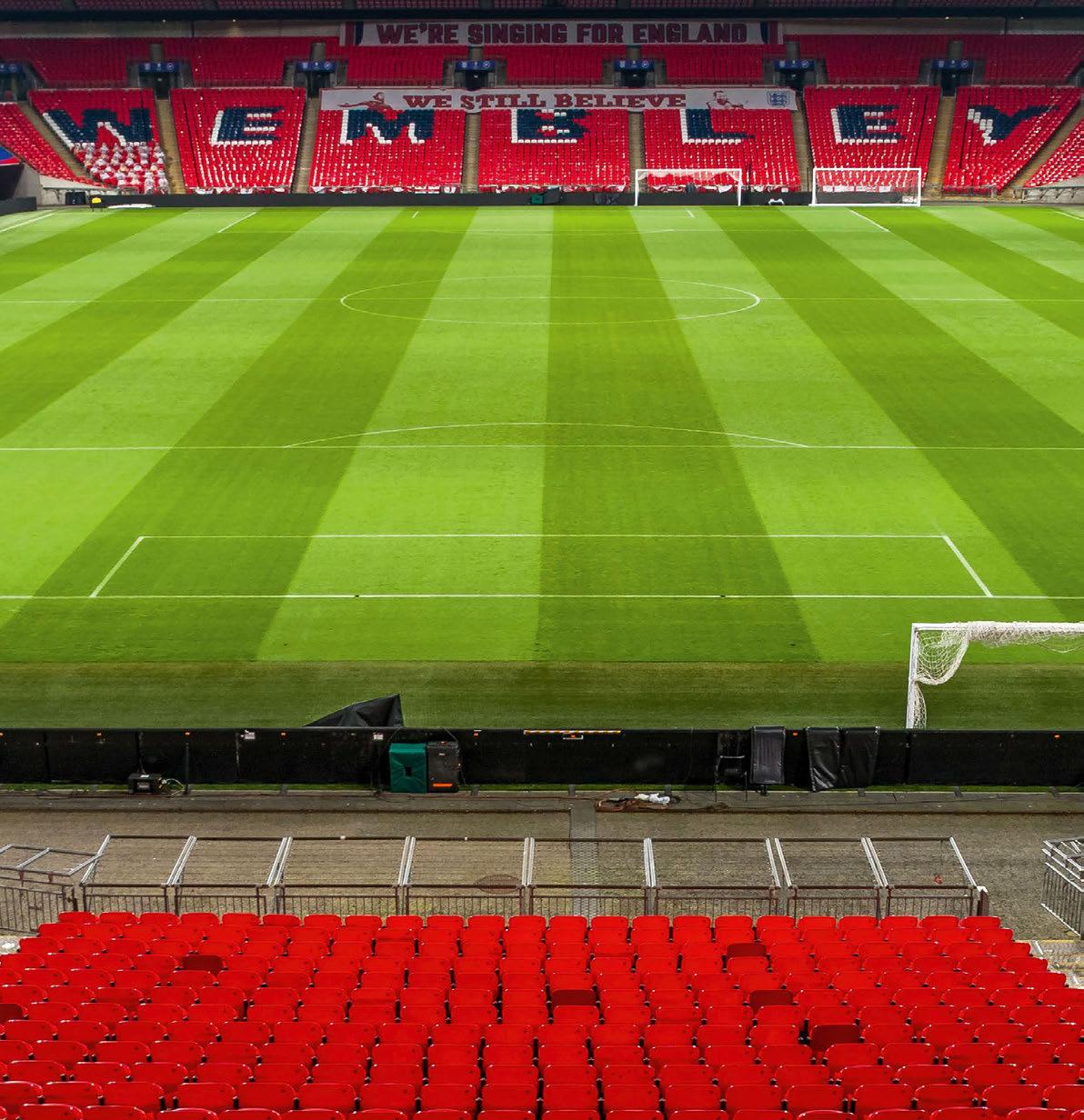ROGERS CENTRE
OREGON 2022
 THE INTERNATIONAL PUBLICATION FOR TECHNOLOGY IN SPORTING VENUES
THE INTERNATIONAL PUBLICATION FOR TECHNOLOGY IN SPORTING VENUES


 THE INTERNATIONAL PUBLICATION FOR TECHNOLOGY IN SPORTING VENUES
THE INTERNATIONAL PUBLICATION FOR TECHNOLOGY IN SPORTING VENUES

t’s always a thrill to feature a genuinely iconic venue on the cover - and they don’t come much bigger than Melbourne Cricket Ground. With a capacity of over 100,000, the MCG needed an audio system to really deliver - and, with d&b audiotechnik, they certainly found it. Turn to page 26 to find out more. Elsewhere, we’ve taken a closer look at the huge audiovisual upgrade at Rogers Centre. The home of Toronto Blue Jays now has state-of-theart technology from Daktronics and EAW, taking the fan experience to a whole new level.
The World Athletics Championships were back with a bang this summer, too, with Oregon playing host at Hayward Field. We’ve taken a deep dive into the project with event design and procurement experts, The Parker Company. An incredible achievement that saw the team cover a whole range of areas to help deliver a spectacular championships.
Bendac’s full turnkey solution for Plymouth Argyle FC is also covered, with Ben DaCosta and the team delivering a new 45 sq metre LED display.
There’s an ADI round-up that’s definitely worth checking out, too, with stadium projects across England and Scotland highlighting the impressive work the Preston-based company are offering to the industry. There are plenty more sporting venue projects and technology featured throughout the penultimate issue of 2022. We’re now looking ahead to 2023, so watch this space!
Sam Hughes Editorial Director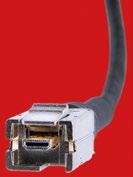

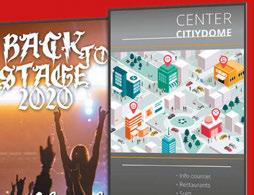












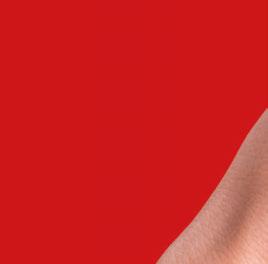











Commercial
Finance
 By Buxton
By Buxton

Stadiums have evolved, but one thing has been a stable factor: the fan! It doesn’t mean the fan hasn’t changed. Fans of the past were only really interested in a good match; the fan of today and future fans want much more. Besides a high-quality game, they also want to have a great experience, from onsite entertainment, a comfortable environment, good quality food that is varied and obviously an exciting atmosphere. In today’s world, the game alone is not enough. It’s the total experience that fans are looking for.
It means that stadiums, event organisers’ and clubs have to change their offerings. Fans drive revenues. Sports clubs’ revenue is mainly generated from ticket sales, media income, sponsoring and merchandising. These are all fan-related. Without fans, sports clubs cannot exist.
Gen Z, Gen Alpha, and millennials are the future of sports clubs, and their wants vary significantly from the fans of the generations that preceded them. These cohorts of people are used to things matching their own personal interests. They have grown up with personal devices that cater for them, market to them and provide much of their social interactions. When it comes to attending sports matches, they
expect a similar tailored experience.
Over the coming years, more technology will enter the arena, service levels will improve, and infrastructure will need to be examined and improved to provide tailor-made entertainment.
Some of this will be implemented relatively easily in today’s stadiums, but it will require some significant investment and change for many others.
For some, this will result in a reduction in seating capacity - however, COVID-19 has acted as a catalyst to accelerate some stadiums to act now and start to look at how vulnerable they are to the Fans that drive revenues.
Many have seen how essential it is to connect with the fans in and outside the stadium and find different revenue streams to support stadiums.
Stadiums have realised that a high volume/low margin model is not sustainable for the future.
Instead, having fewer fans, staying longer onsite and spending more is the way forward, and reducing seating can help with this model as it provides more space for entertainment.
Four ways to deliver a better stadium experience:
1. Ticketless Entrance
Buying tickets is the first step in the fan
journey, and this needs to be as simple as possible. Ticketing for most clubs is already paperless. The technology is available to support facial recognition and other biometrics, meaning visitors can be identified within a second, reducing queuing time and removing fraudulent activity. Paperless is also fair more eco-friendly, offering an added bonus to clubs looking to reduce their carbon footprint and the chance to gain information from fans on demographics and preferences.
Food and beverage consumption offers’ clubs another revenue stream. However, many fans do not like to wait in line because they might miss out on some of the game.
To improve the fan’s F&B experience, several elements need to be looked at: Food and drink quality, speed of service, and costs. Technology will play a significant role in supporting stadiums. Moving forward, more stadiums will implement food ordering apps. Reducing the amount of queuing time for the fan. Digital signage will also play a role in notifying fans that their order is ready and to approach the counter, reducing the number of people waiting in crowded spaces.
Most fans want to feel safe and do not want to
worry about threats or hooligan type behaviour. When people feel safe, they will stay longer and spend more. Clubs that implement facial recognition, blockchain ticketing and crowd control systems ensure the safety of their fans and improve the atmosphere within their clubs, which will lead to longer dwell time and increased revenue from food and beverage sales and other entertainment.
Digital signage screens and IPTV play a crucial role in crowd management, offering wayfinding and alerts to fans as they move around the stadiums.



Today’s fans want to enjoy the experience of being at a match: before, during and after the game. So they expect to be entertained the moment they reach the gates. GenZ and GenAlpha are ultra-connected. They expect to have free and fast access to the internet, like the high-speed wireless internet available at Manchester City. Fans expect to have access to commentary, social media, statistics on the game and the club; They also expect to have an interactive personalised experience. So, stadiums need to give fans a reason to leave the comforts of their home with their large TV and instant access to food and beverages.
Solutions like Bundeling already offer VIPs and players a level of connection and interaction with clubs through their App that allows them to feel part of the club in a way previously not
achievable; the App can send geographical information to VIPs so they can locate their car parking space, their VIP box, allow them to order their match day foot and allow them to see information on players and statics as well as enabling them to communicate with other VIP’s
Many clubs like Tottenham Hotspur have already launched apps for fans that help them plan their visit, confirming the location of their seat, the entertainment available, what food and drink are on offer. Real Madrid’s fan app also targets the fan on non-match days, you can purchase merchandise or delve into stats, and there is a personalised element offering deals tailored to the user.
Shareable and memorable in-stadium experiences will gain popularity as many younger generations enjoy sharing their experiences through social media. Solutions like HYPERVSN’s holographic walls could easily allow fans to interact with holograms of their favourite players before the game! Creating fun, sharable content.
We are also likely to see AR goggles enter stadia offering unique pre-match experiences to fans, allowing them to control the camera angles they are viewing and showing them
match information and statistics to engage the audience further.
Fans today want to be part of the decision making of their club. Today’s fans have grown up with fantasy football leagues, and they are used to making decisions. Many clubs have already tapped into this fan decision-making, with fans being involved in decisions around changes to logos, kits, and even new managers’ appointments. But imagine being able to tap into that during the match. In the future, we could see fans being able to influence the team’s lineup or who gets substituted. This could be via an app or by-polls on social media. This isn’t a crazy idea when you think about it!
This type of activity would be a massive benefit for fans and allow them to feel responsible for the outcome! Fans can provide a wealth of knowledge that clubs can tap into, and it would benefit both the fan and the clubs. If fans help make decisions, they can’t then moan that the manager messed up!
The atmosphere at sporting events and feeling connected with your favourite players and the team is essential for a great experience.

Imagine if fans were able to participate in the game actively! If by clapping, fans could trigger a message on the jumbo LED screens or the
pitch-side LED that would signal if they were louder than the opposition or the crowd at other matches being played simultaneously. Additionally, there are loads of opportunities where the fan can interact with his favourite player. How about tiny sensor cameras that give you a view from the player’s perspective, allowing fans to experience the game from the player’s perspective, or wearing a smart bracelet that pulses in sync with the heartbeat of your favourite player?
With fans spending the majority of their time in their seats during games, it is essential to make this experience as pleasurable as possible. The deployment of jumbo displays like those seen at Manchester City help fans feel more integrated with the game; they allow fans to see in detail what is happening. In the same way, they would at home but with the added benefit of the crowd experience.
The better the experience, the greater the chances of retaining and growing a club’s fan base. Technology is developing fast to help clubs support fans and find new ways to monetise these activities.

The Kappture Kiosk, Mobile App & QR Code Ordering or, as we call it, K-Scan has made it easier than ever before for our customers to place orders, pre-orders and make payment as fast as possible. Every transaction is tracked in real time from around the venue’s sales areas, providing the operations and finance teams with key data to help manage the business, including dashboard KPIs and heatmaps.
What benefits does Kiosk bring? That’s the question you always ponder - will people actually use them? Will they know how to use them? Then, the big questions - are kiosks reliable? Can they withstand the wear and tear? Are they a good investment?
The simple answer is yes to all the above.
Kappture Kiosks are at the forefront of customer self-ordering. The interactive nature of kiosks allows customers to scroll, select and edit exactly what they want in their order. This level of interaction enhances the whole experience for customers just by making the ordering process more convenient.
Kiosks are all about speed of service - they are there to reduce customer queuing times, which enables customers to do what they came to do: enjoy the match, concert or entertainment.

Smaller queues that increase customer throughput drive up spend
per head and maximise total revenue. Reduced queues improve the customer journey by offering a frictionless process from order to collection.
Kappture Kiosks have been designed using the same secure software that powers both mobile and traditional EPOS terminals. It’s perfect for any sales location, too, with the clean, sleek, modern design, as well as with bespoke elements for each customer - delivering a branded solution to fit the environment.
The Kiosks come with customisable digital menus and home screens which can display a combination of rotating and static high definition images, enhancing promotional material to upsell products and experiences, or configured to generate additional advertising revenues.

The software can be upgraded remotely and regularly as part of the hosted platform solution. Digital sales item and menu images, including all the latest nutritional and allergen information, are delivered as standard to provide customers with dietary requirements.
The menus can be updated live during events, adapting to changing stock levels or to push promotions via the digital menus to deliver operational flexibility.
Kappture use the best hardware designed specifically for the hospitality sector, and our latest Kiosks are no exception. Available with either 21-inch or 27-inch touch screens, these terminals can be securely floor mounted, wall mounted or fixed to the counter and tabletops to provide easy customer access.
If space is at a premium, Kappture also offers K-Scan.
K-Scan is designed for speed and convenience for the customer, as well as operational convenience for the on-site team. Kappture can offer a high-quality design for client specific brands. It’s adaptable and can be used in whichever hospitality environment your venue has to offer. The ordering page is built with a digital menu featuring product images, pricing, nutritional and allergen information for the customer to browse through. These menus are fully customisable in your Kappture web-based back office, so you can control all the information as you would do on a traditional EPOS terminal - to make price changes, add or remove sales items and run real time promotions.
K-Scan makes ordering super easy, too.

Simply scan the QR Code using any smartphone to bring up the web app. The solution allows ordering at the table immediately, speeding up the whole process, including payment, and enables customers to order in their own time.
Alternatively, K-Scan can be set up for a Click & Collect-style operation, which is ideal for busy environments where there is little to any seating. Click & Collect allows customers to order for collection straight away or pre-order for a selected time slot that is convenient for them, perfect for half time, performance intervals, or between races.
This flexibility to order freely drives up revenue, as customers no
longer have to wait in line, while also reducing room for order error, with people often being misheard in noisy surroundings. Collection is simplified from the customer orders placed via the Kiosk and/or K-Scan to the same production location, consolidating orders from tables, kiosks and web orders to one single order display board for the kitchen and bar staff, but also for the customers, so they know the order status and can see quickly when their order is available for collection.
All this powerful technology enables venues to operate smoothly and efficiently. But wouldn’t it be great to see that as an overview of your venue? For example, which areas are the busiest, which areas need more stock, where should we install the Kiosks or K-Scan?
The Kappture analytics module and real-time heatmaps are a manager’s dream; they deliver quality data quickly to improve your venue business intelligence during the event.
The heatmap technology shows you a bird’s eye view of your whole venue, clearly profiling the venue’s sales data at five, 10 or 15 minute intervals. System administrators are able to decide the interval range you want to track.
Drilling down through the sales outlet locations, creating a visual metric for operators, highlighting which areas are serving the highest number of customers and those that are perhaps not attracting as much footfall. This overview means the venue operating teams can make well-informed decisions on stock movement and staff placement to make each event day as efficient as possible.
kappture.co.ukWest Bromwich Albion FC has appointed the cloud-based ticketing engagement platform SecuT ix and mobile ticketing application TIXnGO as its new ticketing technology partners. The systems were in place for the 21/22 season. In using TIXnGO, WBA are pioneering the use of blockchain-secure mobile tickets in football.


TIXnGO’s blockchain technology creates a unique, encrypted ticket for smartphones that is completely traceable. This removes the risk of counterfeit tickets and makes it easy for fans to transfer or resell securely. Additionally, it includes an option for Covid self-certification.
The mobile app fully integrates with the SecuTix 360° platform,
which manages both the ticketing and hospitality for WBA. Using SecuTix’s in-built audience management and business intelligence tools, the club’s aim is to improve the fan experience, as well as drive WBA’s continued commitment to innovation. The platform manages stadium tours, coach travel, some merchandise and supports The Albion Foundation, the club’s charitable arm. “Fan experience and engagement sits at the core of the SecuTix platform,” said Mark Miles, West Bromwich Albion’s Operations Director. “And it’s this connected nature that really appeals to our values. We’re excited about working with SecuTix over the coming years to improve the all-round ticketing experience for our supporters – existing and new.”
“We are thrilled to welcome West Bromwich Albion to our growing list of sports clients in the UK,” added David Hornby, UK MD of SecuTix & TIXnGO. “The club, like us, is committed to embracing the latest technologies to improve the fan experience. As football clubs learn to live alongside Covid, having a mobile ticketing tech solution that can be agile and respond efficiently to last-minute changes will help both the club and fans. Combining this with our CRM tools, we can help the Albion connect systems, supporters and partners like never before.” secutix.com
 AXESS HELSINKI OLYMPIC STADIUM
AXESS HELSINKI OLYMPIC STADIUM
The Helsinki Olympic Stadium, which was the venue of the 1952 Olympic Games and is considered one of the most beautiful stadiums in the world, now includes innovative solutions from Axess AG - the official outfitter in the access area.

With a capacity of over 36,000 spectators, the Helsinki Olympic Stadium is the largest in Finland and the second largest stadium in Northern Europe. With a total budget of approximately 300 million, the complete modernisation of the stadium is one of the biggest projects regarding the stadium. Among other things, all grandstands will be roofed over, the martial arts arena will be renewed, the safety standards will be adapted to today‘s requirements and a new access system has been installed. The imposing structure, built between 1934 and 1938, was among other things the venue for the first Bandy (a form of ice hockey) World Championship in 1957. It is also the home stadium of the national football team of Finland and contains a first-class sports museum. The stadium is a listed building and the reconstruction is planned and realised in close cooperation with the monument authorities.
Axess equipped the stadium with 13 mobile AX500 Smart Gates NG Turnstiles, 47 Standard Smart Gates NG Turnstiles, two mobile
gates with Turnstiles ADA and eight Standard ADA. The Turnstile ADA allows easy access through a particularly wide entrance. This is extremely practical for people with prams or wheelchairs, and offers a convenient alternative to the standard gates.
In addition, four AX500 Smart Security Gates were installed by the Axess team in Finland. The robust, vandalism-proof construction fulfils the highest security features and is simultaneously optimised for a high passage rate.
With the additional 40 mobile HANDHELDS, the stadium is now optimally prepared for future events with the latest solutions. The HANDHELDS are extremely robust and weatherproof, and are used as ticket inspectors or ticket readers. Two of the mobile gates will be equipped with WIFI, a battery and castors and placed at the entrance of the integrated museum. This means that they are extremely flexible in terms of position and can change location if necessary.


SKIDATA’s eTicketing solution offers clubs the opportunity to reduce costs and increase revenue from the very first game, and for every subsequent game as well. Top internationally renowned clubs are already on it.
Queuing at the ticket office is an experience that belongs in the past. No sports fan wants to wait in line to buy a ticket to see their favorite team. But is building a web shop to sell tickets online enough? Definitely not. In almost all areas of life, customers have long since become accustomed to the convenience and speed of fully digital processes: You shop, pay, and enjoy your purchases with your smartphone. Why should it be any different when visiting a stadium? Fans appreciate the fast and efficient access to stadiums, where they simply pull out their smartphone at the entrance for admission without rummaging around for a paper ticket.
SKIDATA’s eTicketing solution offers fans a warm welcome when purchasing tickets and entering the stadium. And for stadium operators, the benefits are even greater: eTicketing saves time and staff – and, of course, operating costs at every weekend and every game.

SKIDATA’s eTicketing solution integrates QR codes and NFC tickets directly into the Apple and Google wallets that many stadium visitors have on their smartphones anyway. No additional app is necessary. For visitors, it’s an extra convenience. For stadium operators, it’s an immediately significant cost advantage, and one that can be measured as well: It eliminates expenses incurred while printing, mailing, and handling paper tickets. The cost advantage of digital processing runs up to 90 percent when compared to paper ticket handling. It’s a difference that can be observed as soon as eTickets are introduced, and the return on investment is clear within the first season of changeover from mailing tickets to digitally dispatching tickets. eTicketing pays for itself with higher revenue as early as by the second season. eTicketing also offers additional flexibility for the clubs because eTickets are interactive tickets. This means that they can be updated or upgraded, unlike a printed QR code on a paper ticket or PDF printout. Changing start times or a postponed match on game day? No problem – the eTicket updates itself automatically.
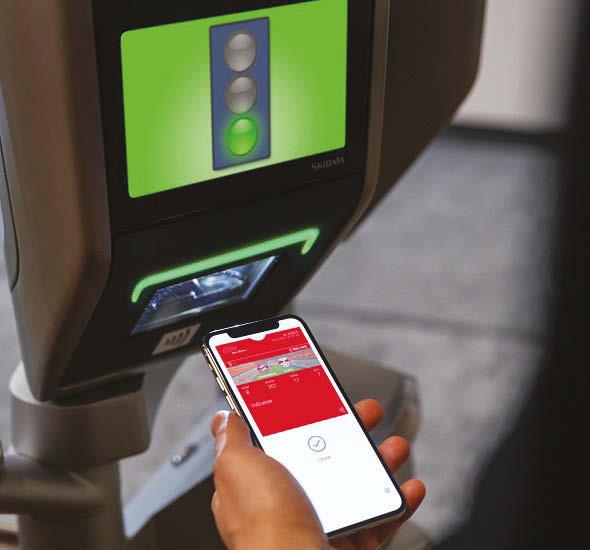
An important factor is that SKIDATA’s eTicketing solution also works independently of the world market leader’s access solutions – and it works in conjunction with any desired ticketing partner. However, the full potential of eTicketing is realized when it is combined with SKIDATA’s modern access solutions. This drives further cost and service advantages, which in turn lead to higher revenue for stadium operators.
In combination with NFC solutions at the turnstiles in stadiums, eTickets offer significantly increased security for coming seasons. Hardly anyone wants to hand over their smartphone to someone else – not even to sneak a friend into a soccer match. NFC offers anti-piracy protection that prevents tickets from being passed on or distributed without permission. Smartphone-based eTickets can be personalized, allowing for unique identification of each ticket holder if necessary. Personalised eTickets for season ticket holders also reduce the amount of plastic waste generated by printing, providing an environmental benefit alongside the cost benefit for the stadium operator.
The benefits of eTickets extend beyond increased security at entrances – they also reduce the cost of ticket checks. The digitalised process requires less staff as visitors can scan their eTickets for themselves.
While the costs are reduced using eTicketing solutions, the visitor-facing touch points are even growing. Clubs can keep their members and guests up to date with push notifications, or share relevant information, including traffic updates around the stadium. This helps foster a bond with fans. The direct line to visitors and guests can also be used for advertising, offering new sources of revenue for stadium operators.
In the age of COVID, SKIDATA also offers stadium operators a green pass solution that can be easily integrated into a SKIDATA access system. This means, no additional staff at the entrance or any additional apps are required. This ensures the protection of both the venue and the visitors. The GDPR-compliant monitoring of ticket data and access-granting processes also prevent fraud at the same time.
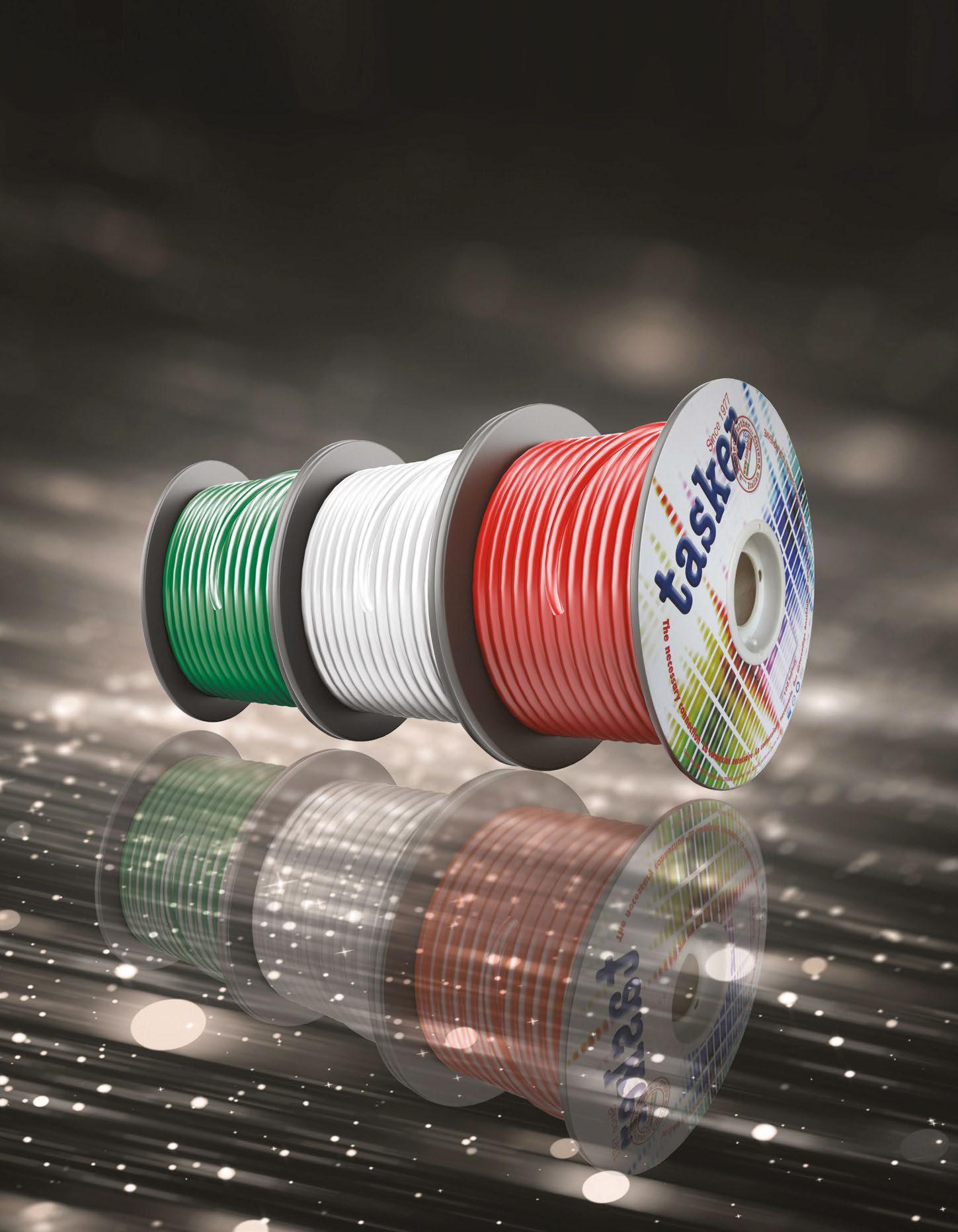


the
Blue Jays moved
Aimproved
field advantage
experience by continuing a partnership with
at
Centre in

The total of over 14,000 sq feet of displays combining for more than 11 million LEDs were installed in the offseason, including an HDR-capable main video display. The new main video display is curved, HDR-capable and measures approximately 49 feet high by 110.5 feet wide. It is installed in centre field to bring an excellent viewing experience to Blue Jays fans throughout the stadium. This display features variable content zoning, allowing it to show one large image or multiple zones of content - including any combination of live video, instant replays, up-to-the-minute statistics and game information, graphics and animations, and sponsorship messages.
Flanking the main display are four additional LED displays and content can be coordinated across all five displays for one main centre field viewing experience. Two displays mounted even with the bottom of the main display measure 15.5 feet high by 75.5 feet wide and two ribbon-style displays appear to extend out from the middle of the main display measure nearly 5 feet high by 75.5 feet wide. All centre field displays
feature 10-millimeter pixel spacing.
“The new HDR-capable main video display and center field display configuration at the Rogers Centre will deliver an amazing viewing experience for the Toronto Blue Jays, their players and fans,” said Daktronics President and CEO, Reece Kurtenbach. “We’re thrilled to continue our long-standing partnership with the team and to introduce this cutting-edge technology at their ballpark.”
Additional displays include a main ribbon display installed along the seating fascia measures 3.5 feet high by 1,324 feet wide and features 16-millimeter pixel spacing. Two displays near the foul poles each measure 6 feet high by 32.5 feet wide and, along the outfield wall, two field-level fence displays each measure 9.5 feet high by 65 feet wide. These four displays feature 10-millimeter pixel spacing.
Coordinated together, all of these displays provide additional statistics, graphics and sponsorship opportunities to entertain and engage Blue Jays fans during every game.




When officials with the Rogers Centre, home of the Toronto Blue Jays MLB team, decided it was time to replace the two decades old PA system back in 2019, they could not have predicted the impending pandemic. Working with AV and design consultant Anthony James Partners (AJP), the venue selected a brand new state-of-the-art QX series PA from Eastern Acoustic Works (EAW®). With the building shut down in 2020, the Blue Jays were forced to play the season in the United States. The stadium was unable to reopen its doors due to the lockdown and didn’t have the opportunity to show off its new PA system until the team returned to Toronto for the following season.



SF Marketing (SFM), a Canadian-based provider of customized go-to-market solutions for the audiovisual, live entertainment and media production industries, managed the procurement, delivery and testing of the equipment. AJP and a representative from the Toronto Blue Jays, designed the system, while All Pro supplied the gear and managed the deployment and tuning. Spark Power handled the integration.
“In addition to being the local EAW representative in Toronto for the last 24 years, I am also a fan of the Jays and the facility,” says Rob Deslauriers of SFM. “It was exciting to see the prior EAW audio system upgraded to the EAW QX series to achieve an even better fan experience. Current Major League sports require a more immersive experience for fans and the new system does not disappoint.”
A total of 125 EAW QX500 and QX300 Series loudspeakers were installed as part of the main PA on the 500 seating level. The 100 level has three-way QX500 Series boxes and the 200 level features two-way QX300 Series speakers. Over 250 additional EAW products were installed throughout the venue comprised of mainly MK8126i two-way passive speakers along with JF80Z and JF60Z two-way trapezoidal enclosures.
The QX Series delivers very high output point source clusters in a size-efficient package. The series includes two ranges – QX500 and QX300 – each of which delivers a choice of coverage patterns from systems that use identical enclosures.
Ideal in sports arenas, the QX series is also designed for a wide range of other venues requiring high power and consistent coverage in a compact housing; venues including houses of worship, outdoor stadiums, performing arts spaces, theaters and clubs. The QX’s broadband pattern control helps tame hostile acoustical environments.
In addition to the audio upgrade, the stadium also added several new visual elements, including a brand-new video board and several pole displays, as well as a renovated control room for the following season.




Having a
from

“
is elevating our fan experience with the most LED displays ever installed at a sports
With all those pixels it is imperative we think of the
journey from the moment they
to
in their
at
sports
allows us to find a happy fusion of tradition and technology.”
Seattle Kraken SVP
Experience & Production Jonny Greco
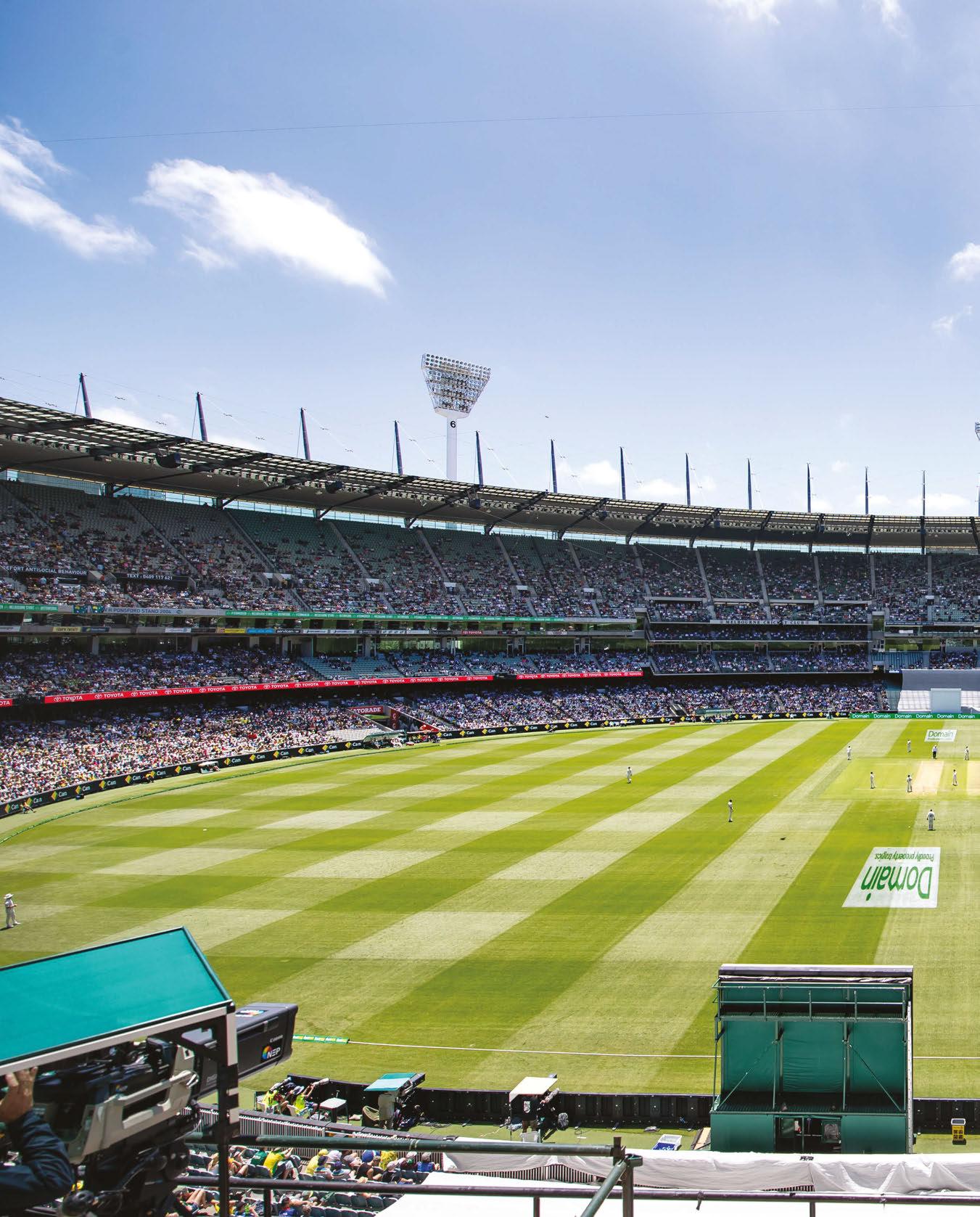
here aren’t that many occasions when you encounter a 100,024 seat space; I think there are only eleven in the world.” When the Melbourne Cricket Club (MCC) contracted Emmy-Award winning AV consultancy, Auditoria, led by Scott Willsallen, the brief was simply to deliver the best possible audio to every seat –and in doing so anchor its reputation as a world class sporting venue. Cricket is the second most watched sport in the world and the Melbourne Cricket Ground (MCG) or the ‘G’ as it’s affectionately known, is its second largest home. Yet, for Scott, no stranger to stadia, the project was less an issue of scale, than taking care of the subtleties.

With memory-making game days, not ROI, in the driving seat, the MCC has reimagined the value of audio in stadia, taking its vision beyond the bowl into every public space, including restaurants, bars, atria, concourses, gate entry and exit points, as well as broadcast facilities. For those involved in this highly collaborative project, including Auditoria’s Senior Consultant, Luis Miranda, installer Rutledge AV, (now a Diversified company), d&b’s Australian partner, NAS, and the MCC’s General Manager IT & Innovation, Rey Sumaru, it was an exercise in thinking optimally and working backwards. “The brief was quite different,” confirmed Scott. “In that it was just give the best possible experience to the audience. So, one of our first tasks was how to interpret that.”
To understand the fan’s game day journey, Scott spent time in the venue, tuning in to the detail. His insight-gathering exercise resulted in a critical realisation: that 100,024 people can either be simultaneously in their seats or elsewhere in the venue – in any one of the staggering 3,000 plus back of house rooms. “I’d already spent six months in the building
doing the Commonwealth Games,” admitted Scott. “And I had no idea there were that many spaces.” Scott rethinks capacity and designs for 200,000, going above and beyond to transport the in-play atmosphere - at the flick of a switch - to every major touchpoint beyond the bowl.
Of the numerous d&b audiotechnik loudspeaker systems, the first kicks in on arrival. Custom paging allows the MCC to tailor its messaging to unique zones, supporting the fans as they move around, streamlining arrival and departure. These are not your typical, irritatingly-hard-to-hear public announcements, but clear, authoritative communications. Gate filtering information comfortably reaches crowds arriving at the ground, information that becomes gate specific the closer fans get to the building - have your bags out, tickets ready. Once inside the attentive voice of the MCC imparts all the game day need-to-knows; a reassuring welcome before entering the bowl. “Information that’s delivered aurally in front of you has a higher priority than from any other direction,” explained Scott, on the thoughtful

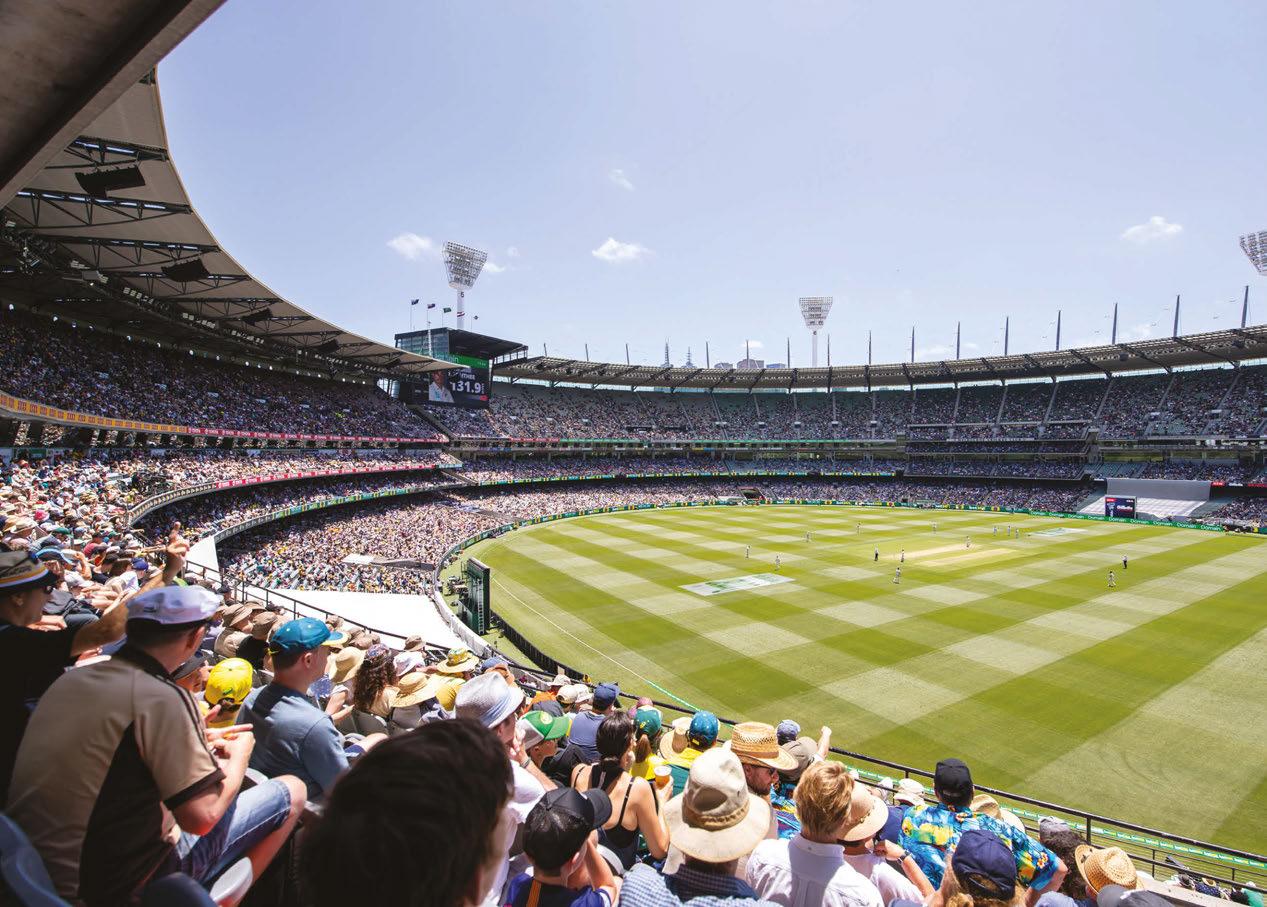

positioning of speakers. “People don’t need to rotate their heads.” For the unseasoned visitor, families, and the excitedly distracted, it’s simply about easing the journey.
Stadiums are, by definition, complex spaces structurally and acoustically and the geometry of the G is no exception.
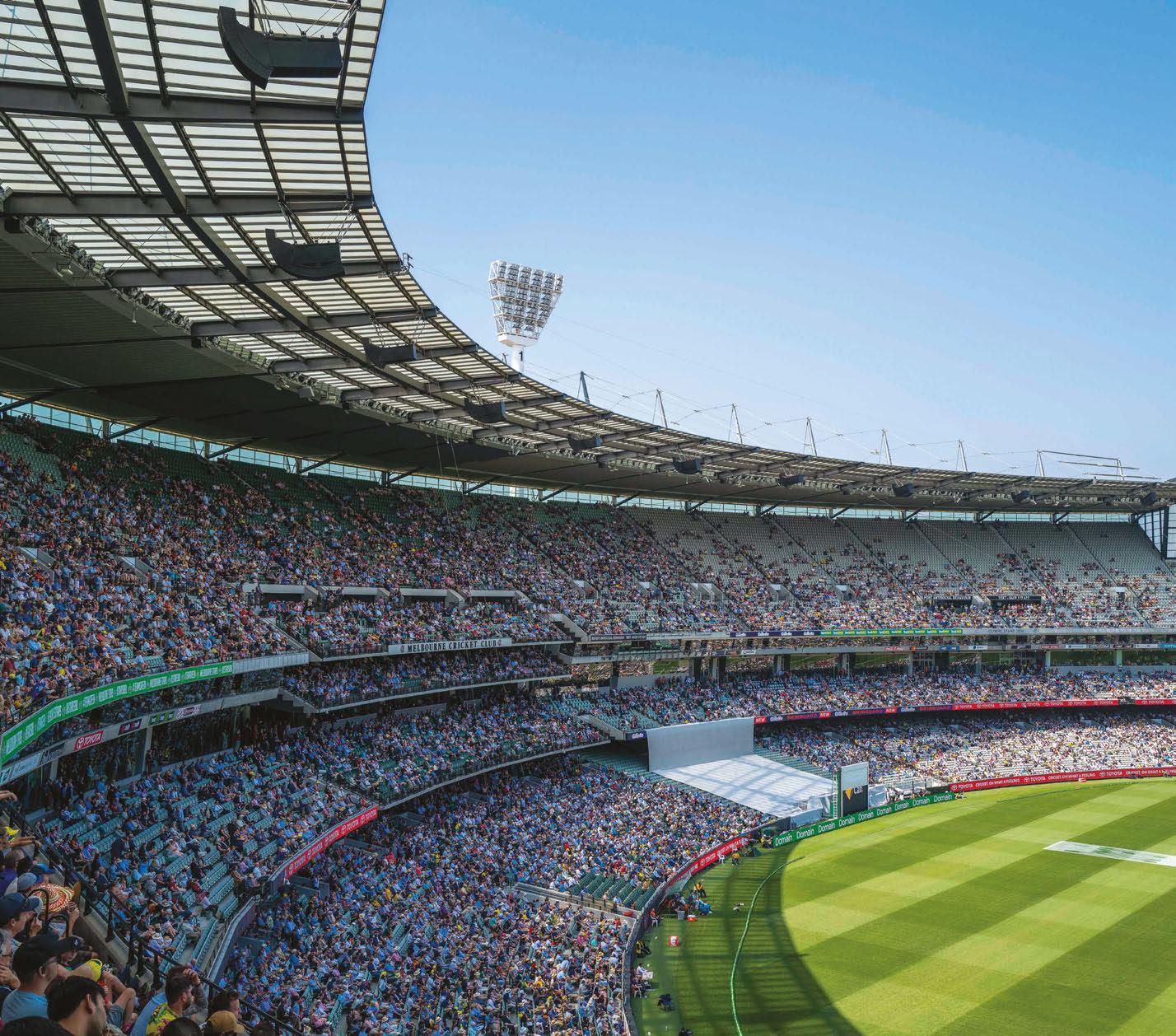
Designed without sound reinforcement in mind, the fifty seven under-balcony bays inside the bowl were, prior to the upgrade, notoriously muffled by reputation; acoustically speaking the worst (but not the cheapest) seats in the venue.
Yet, at capacity the under-balconies seat a staggering number of fans – a fact not easily relegated to the side-lines. “What our client wanted was to deliver a great experience, the same energy, to everybody,” said Scott. “So we can’t just ignore the under-balconies and pretend they’re going to be fine. So what do you do? You treat every single space like it’s own venue.”
Not only do the under-balcony bays now benefit from acoustic treatment, but each one is equipped with a dedicated
d&b system of its own – standout moves with nothing but the fans’ experience in mind. These once disconnected spaces are now in total harmony with the dynamic energy elsewhere; as the dramatic highs and lows play out, the audio quality inside the bowl remains strikingly natural and consistent - in all 100,024 seats.
Scott’s decision to select products from a single manufacturer, whose every loudspeaker shares a common tonality, has resulted in a seamless audio experience throughout - an ecosystem of sound. The d&b system, with its innovative software also enabled a more straightforward commissioning process plus several long-term operational and technological advantages. “It was the efficient, logical thing to do,” confirmed Scott. “Being able to choose speakers with different dimensions and form factors is really helpful in terms of delivering the performance we’re after with products that meet the architectural demands. The
systems are also meticulously built to last, both physically and technologically. As for servicing, it didn’t make sense to select different brands.”
Meeting EWIS/PAVA life safety standards is, for many venues, synonymous with the audio brief, but for Scott, knowing the capabilities of the d&b system, this was less a goal than a foregone conclusion - a starting point for thinking beyond baseline intelligibility. The result is a system that not only delivers authentic live and pre-recorded messaging, but enables performing artists to access musically exciting, production sound.
Ultimately, the scale, complexity, and small window of opportunity to complete the installation, plus the project’s lets-aim-for-the best-and-work-backwards approach, means
the MCG won’t need another audio upgrade anytime soon. As someone wise once said, it’s been a case of doing it well, doing it once. In answering the brief - to give fans the best experience possible - Auditoria has mapped the game day journey, encompassing every touchpoint, through a holistic eyes-and-ears approach, and in doing so, united the fans’ experience through sound.
Fan engagement has led the MCC’s Smart Stadium Strategy for several years and while high density WiFi has digitised the customer journey, this carefully curated work of tech’ will ensure that journey doesn’t lose its soul. The audio factor at the G is at once comfortable and connective, and will see fans in their thousands freefall, unforgettably, into the life-affirming theatre of sport.
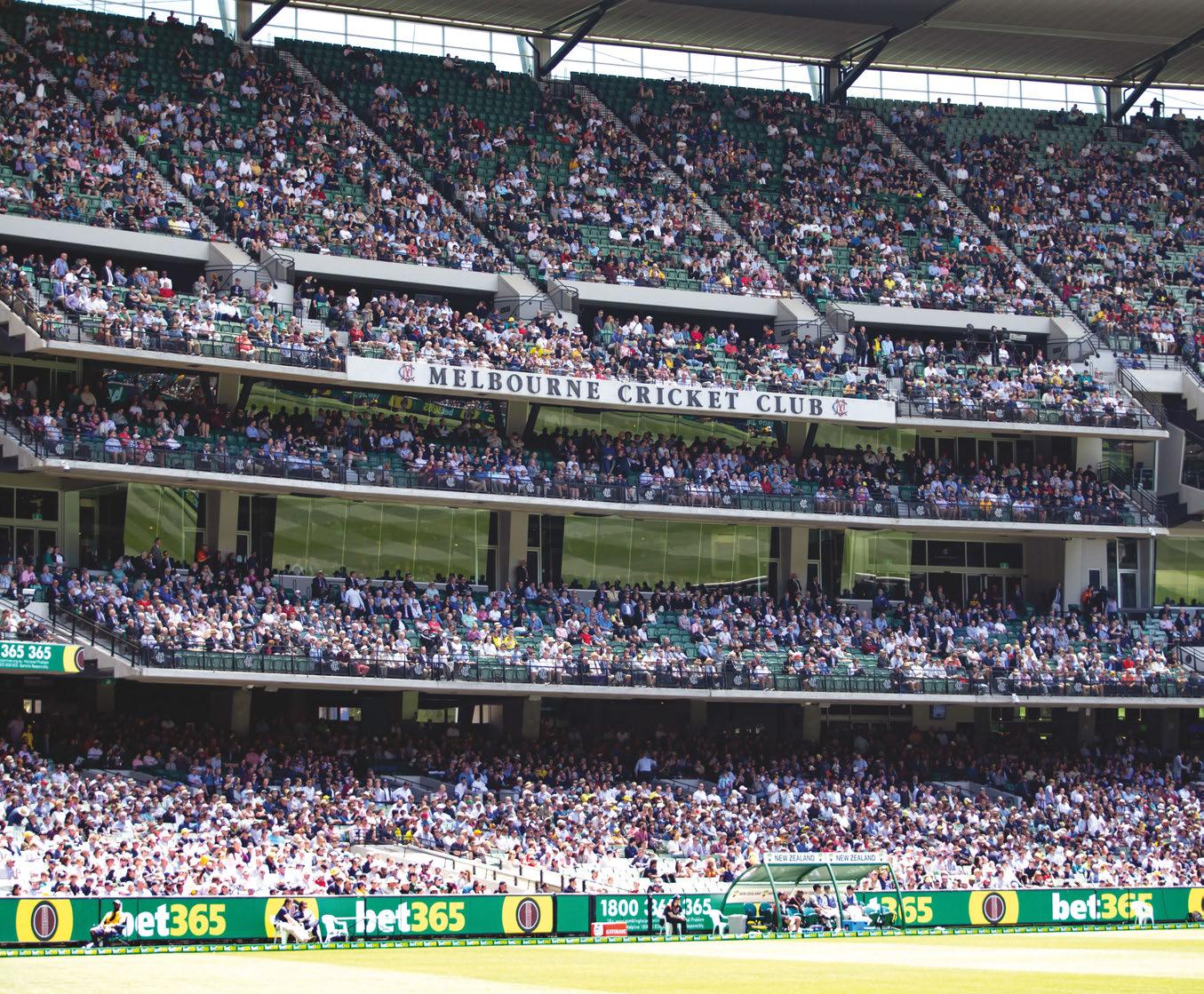
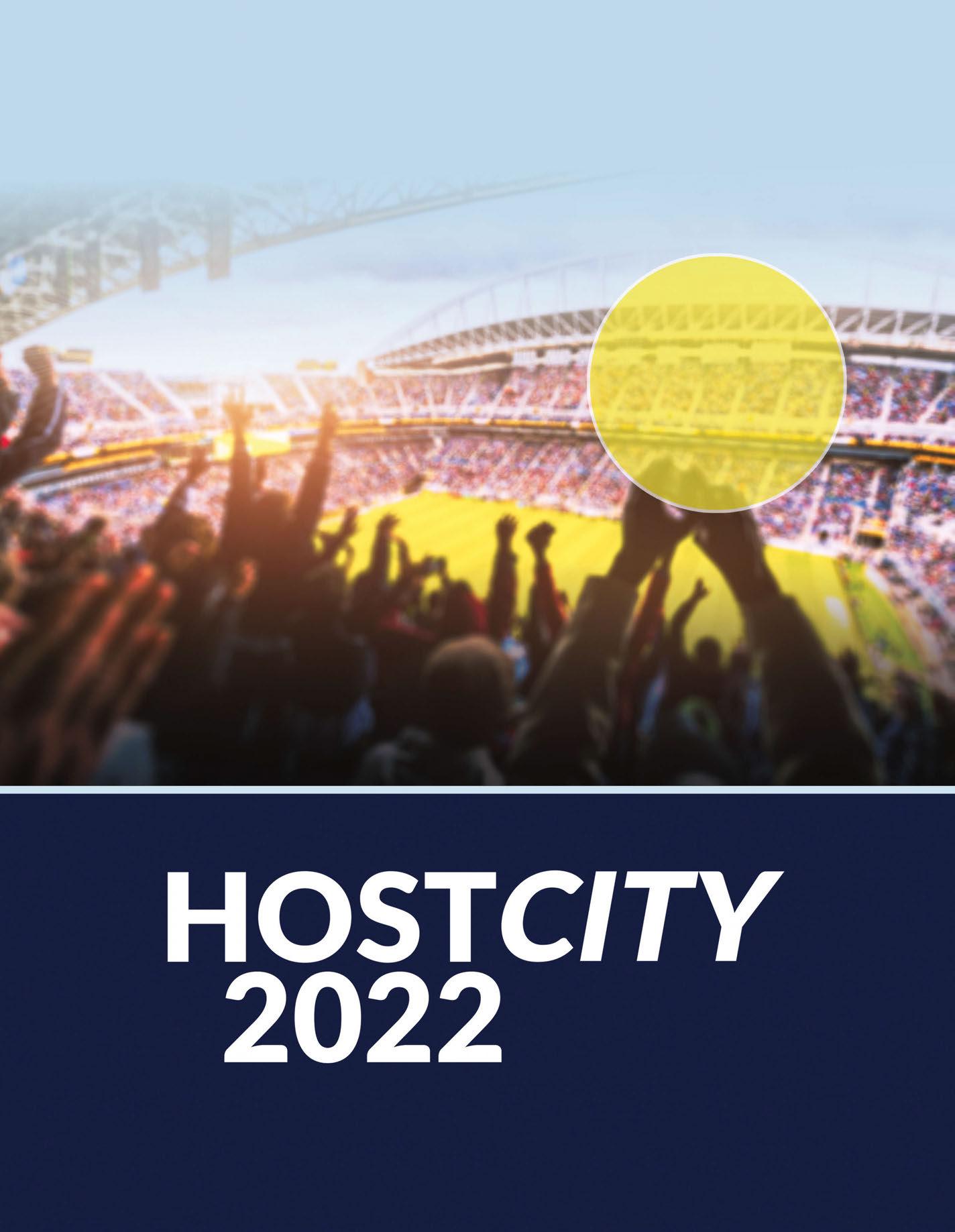

rom concept through to installation, Bendac provided Plymouth Argyle FC with a full turnkey solution for their 45 sq metre LED scoreboard, which has dramatically improved the fan engagement and offered significant commercial opportunities, supporting the club in their vision of enhancing the Home Park experience 365 days a year.
The Plymouth Argyle installation perfectly exemplifies what Bendac do as a business. Every department in the organisation played a part in this project, with the finished result being nothing short of spectacular.
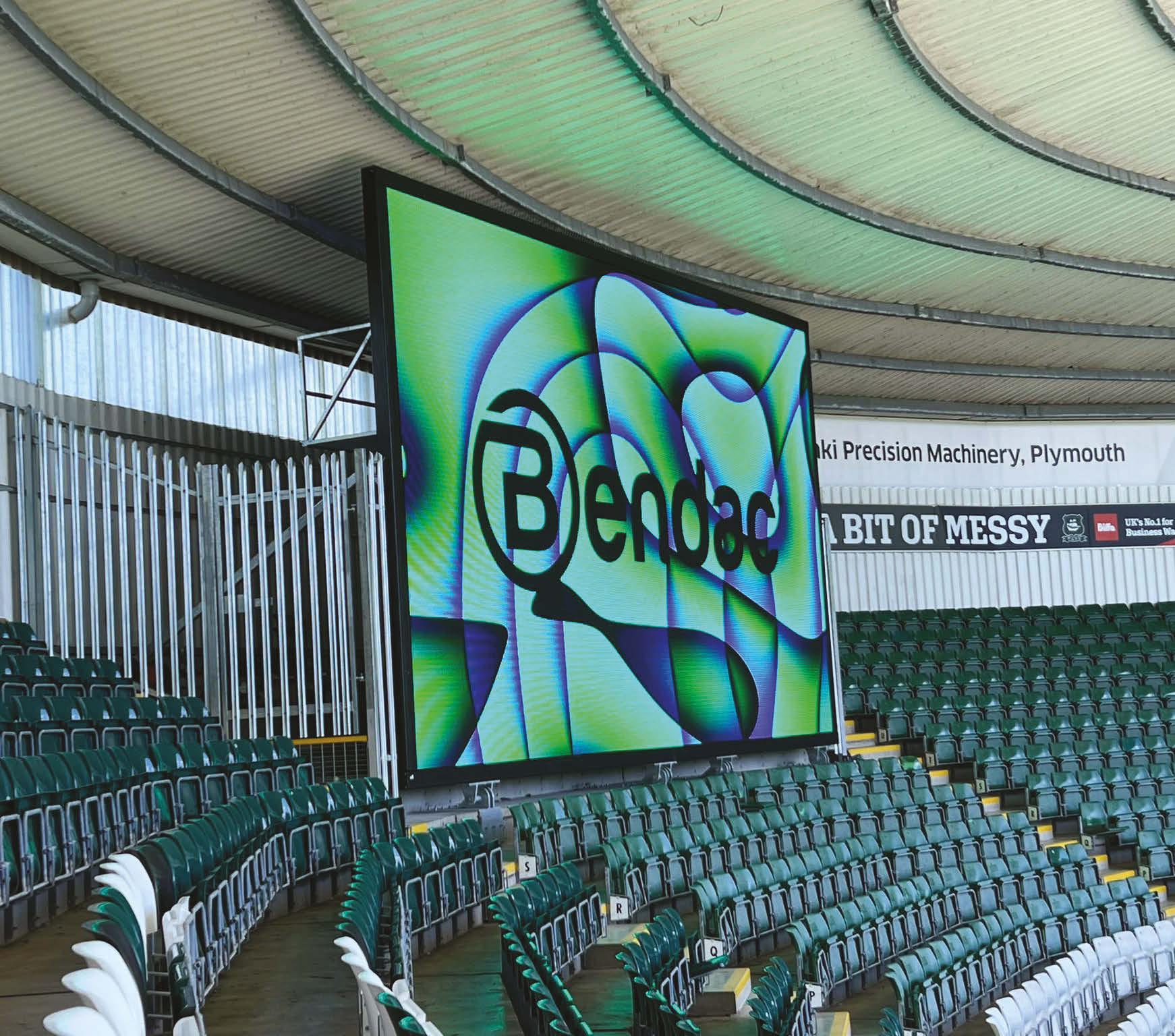
The team at Home Park approached Bendac as they wanted to install a large scoreboard screen within their stadium bowl. As a stadium with a limited digital presence, they wanted to boost the matchday experience for all their fans and create opportunities for commercial revenue and ROI.
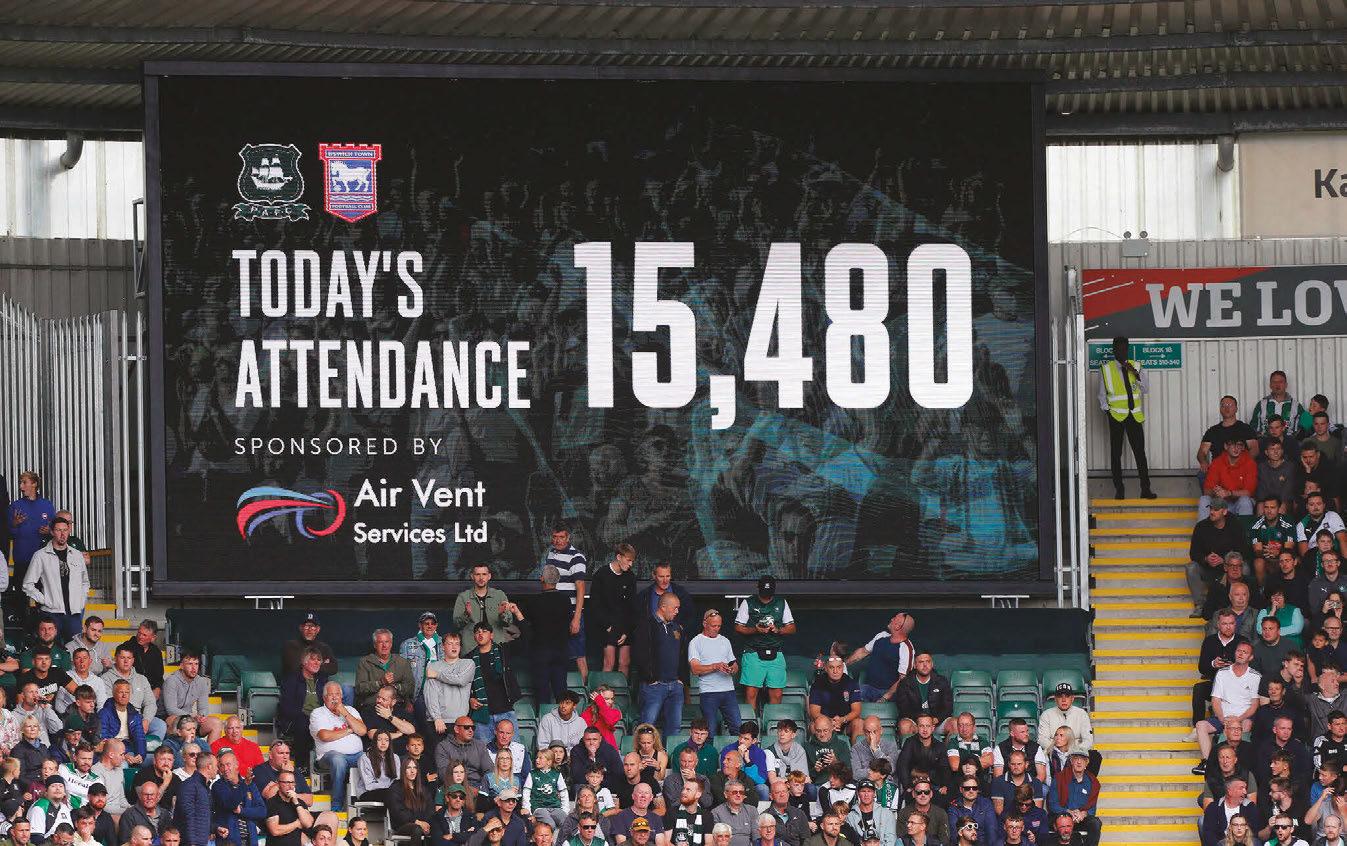
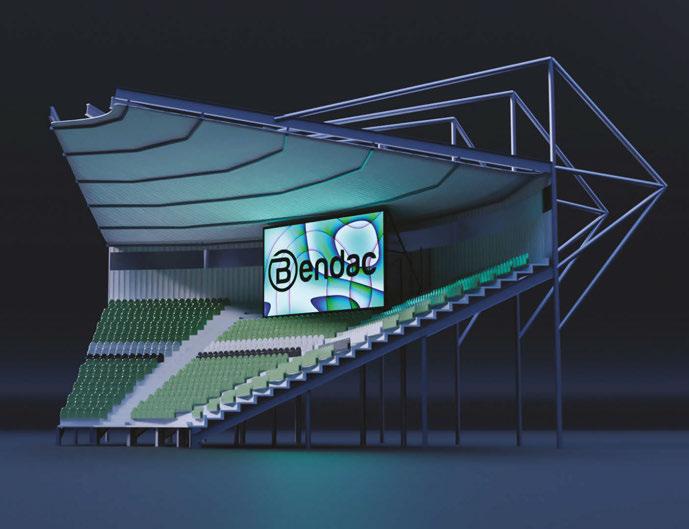
“Over the last 12 months, we’ve been working with the team at Bendac Group on the installation of a new 45 sq metre LED screen at Home Park, a project which has been ably led by Ben DaCosta from concept through to delivery,” explained James Greenacre, Head of Commercial Operations at Plymouth Argyle.
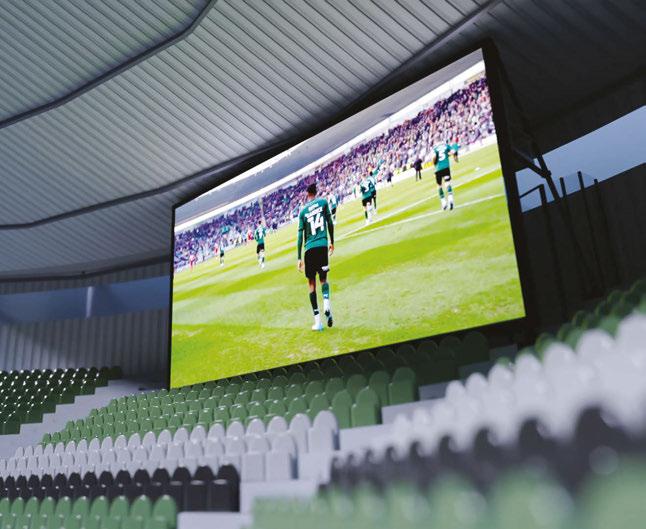
Bendac’s Chief Technology Officer, Bill Gladwin, attended the site and was able to identify prime locations for a large-scale LED display, and worked closely with the stadium architects and engineering team to choose the most suitable location for a screen to be built. This was an in-depth process, considering sight lines and numerous other factors of the two identified locations to ensure that the position of the screen would have the best possible benefit to the fans and make sure that the screen gets the quickest possible payback, thereby ensuring a high return on investment for the club.
The in-house creative teams at Bendac, alongside Bill, used
this information to create several concept videos and images in order to support the club in their decision-making process.
The Client Experience Manager and Leadership team from Bendac communicated all possible options and took on board any questions or concerns to reassure the club that their investment would be sure to achieve the goals set out. This level of attention to detail and care for the ultimate client experience highlighted how Bendac will go the extra mile to guarantee total satisfaction.
The club proceeded with a 9m x 5m, 10mm, high-bright 8,000 Nit display that a team of Bendac engineers expertly designed and installed, making a massive impact already at Home Park. The creative team were again called upon to support the installation process by providing bespoke content to perform testing, which was all completed in time for The Pilgrims’ first match of the season.
Staff and fans alike have had only positive comments about the screen so far, with many already saying it has totally
boosted the club’s match-day experience, delivering a much more professional setup at the ‘Theatre of Greens’. The Home Park project is another impressive example of Bendac’s full turnkey solutions, highlighting they are fast becoming the go-to LED display provider of choice. A team of 30 passionate individuals, working in total unison, providing outstanding products and services, specialising in challenging retrofitting projects with expert designing and advanced engineering, all under one roof.
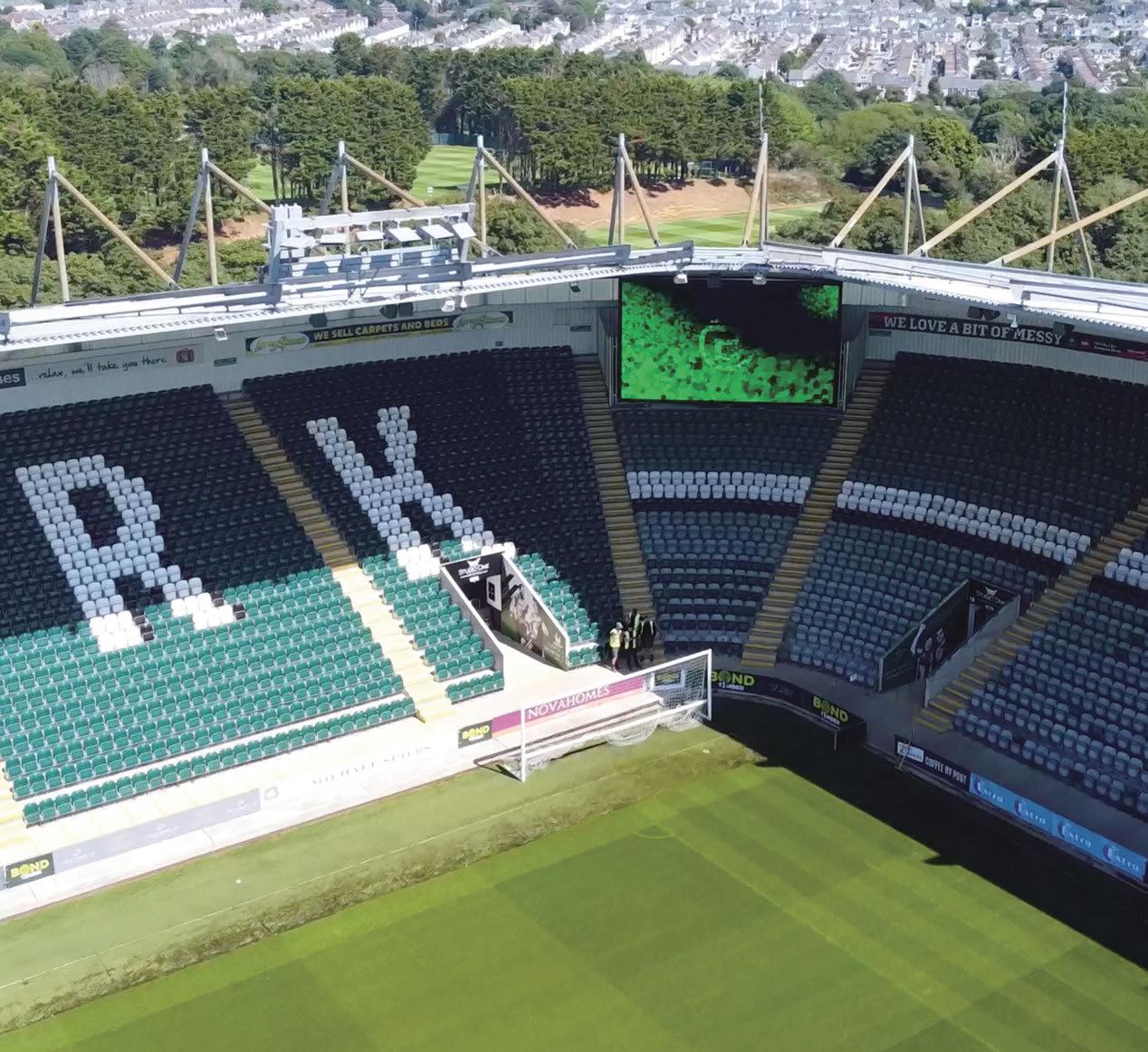
“Ben and his team worked with us to explore and identify all of the various opportunities that were available to us, enabling us to ensure that all of our objectives were met by the proposed solution,” James concluded.
“What was particularly pleasing was the constant alignment with our values and the overarching focus on our core brief, which ensured that we remained focussed on our goal of improving our supporter experience, whilst also adding a new range of opportunities to our commercial portfolio.”



The 2022/23 EFL and SPL seasons are well underway and for new adi.tv clients - Blackpool, Ipswich Town, Heart of Midlothian and Hibernian - the new season has marked the dawn of an enhanced matchday experience for supporters and commercial partners.
During the off-season, all four clubs invested in a variety of ADI’s unique stadium solutions, from digiBOARD perimeter systems and superwide LED screens, through to Live Venue fibre connectivity and content creation. With three decades of experience, ADI have long established themselves as the UK’s leading LED supplier to sports venues, with over half of the English Premier League and 60% of the EFL Championship currently using their digiBOARD systems. With a wide range of bespoke solutions on offer, EFL and SPL clubs are now beginning to recognise the commercial potential and fan engagement opportunities of digitalising their stadiums with LED screens and signage, and in Ipswich Town’s case, investing in a full stadium-wide digital transformation.

While the Preston-based company has a strong pedigree in delivering services to top-tier clubs around Europe – a client list that includes German giants Bayern Munich and Borussia Dortmund – the flexibility of what they offer allows clubs at all levels of the football pyramid to digitalise their stadiums. More recently, Ipswich and fellow League One clubs Oxford United and Forest Green, have turned to ADI for in-stadia LED installations and IT infrastructure, and, in turn, have received the same hardware and technology that sits within some of the world’s most spectacular football stadiums.
Accessibility is something that ADI are proud to provide and their digiBOARD technology now sits within 42 European football stadiums. Uniquely, ADI are a manufacturer, installer and operator and their latest MT LED technology sits at the heart of their offering and has been developed on the back of nearly 30 years of operating LED in the stadium environment.
MT has been designed specifically for efficiency, reliability and lifetime cost-effectiveness. The modular panels are far lighter and slimmer than previous generations, with a fully-sealed design. For clubs, this translates into lower installation costs, greater operating efficiency and reduced ongoing maintenance costs throughout the lifetime of the technology, which is frequently up to ten years. And of course, all installations are supported by ADI’s renowned levels of service – panels that are damaged

through the usual abuse that a pitchside perimeter receives can be easily swapped out and sent back to ADI’s UK service bench who repair them to be re-used at a later date.
MT has reimagined what can be achieved for clubs beneath the top-flight or without endless amounts of resource and presented them with the opportunity to make significant visual improvements to their stadiums at a reasonable cost.

In addition to hardware, all of the clubs have opted for ADI’s unique Live Venue solution, taking their total number of venues connected to the network to 73.
‘Live Venue’ is a nationwide broadcast network that allows matchday content to be delivered as a full live event production from ADI’s galleries in Preston over dedicated fibre lines. The Club then uses ADI’s experienced Studios team - who currently service over 35 UK clubs and create over 2,400 hours of matchday content per year - to create and manage the content across the digital platforms inside the stadia bowl. Each season over 400 full matchday productions are delivered from the 16 purpose-built Live Venue galleries.
The benefit of managing content remotely is that it removes the expenditure of a matchday production team or for a broadcast studio to be built on-site. It also allows for content across all platforms to be co-ordinated and synchronised, and provides a simple upgrade path to additional services, such as IPTV.
Showcasing the ambition of the club, League One high-flyers
Ipswich Town were the latest club to partner with ADI to install an impressive and co-ordinated stadium-wide digital platform. The focus was to improve the matchday experience for supporters and attract and maximise value for commercial partners.
To achieve this, The Tractor Boys opted for the MTD digiBOARD perimeter solution around the three camerafacing sides of the stadium, along with a 33m2 giant screen in the South-East corner of Portman Road. On top of that, a brand-new IPTV solution including 164 screens is set to go live in the coming weeks to entertain fans in hospitality, concourse and corporate areas.
ADI are providing a full-stack solution this season, with technicians onsite for each match and content created, managed and delivered by ADI’s experienced Studios team through the Live Venue fibre network. Whilst most football clubs have fragmented digital platforms with multiple operators and disparate control systems, Portman Road can now seamlessly distribute content across all LED screens and digiBOARDS, enabling far more effective management of stadium-wide communications and promotions.
With a brief to improve their commercial revenue streams, ADI secured a deal to become Blackpool Football Club’s official Digital Display Partner. The Championship outfit partnered with ADI to install a 10mm digital perimeter system that covers the TV arc, along with an additional crowd-facing ribbon on the rear. The combination has not only provided an enhanced experience for both fans and
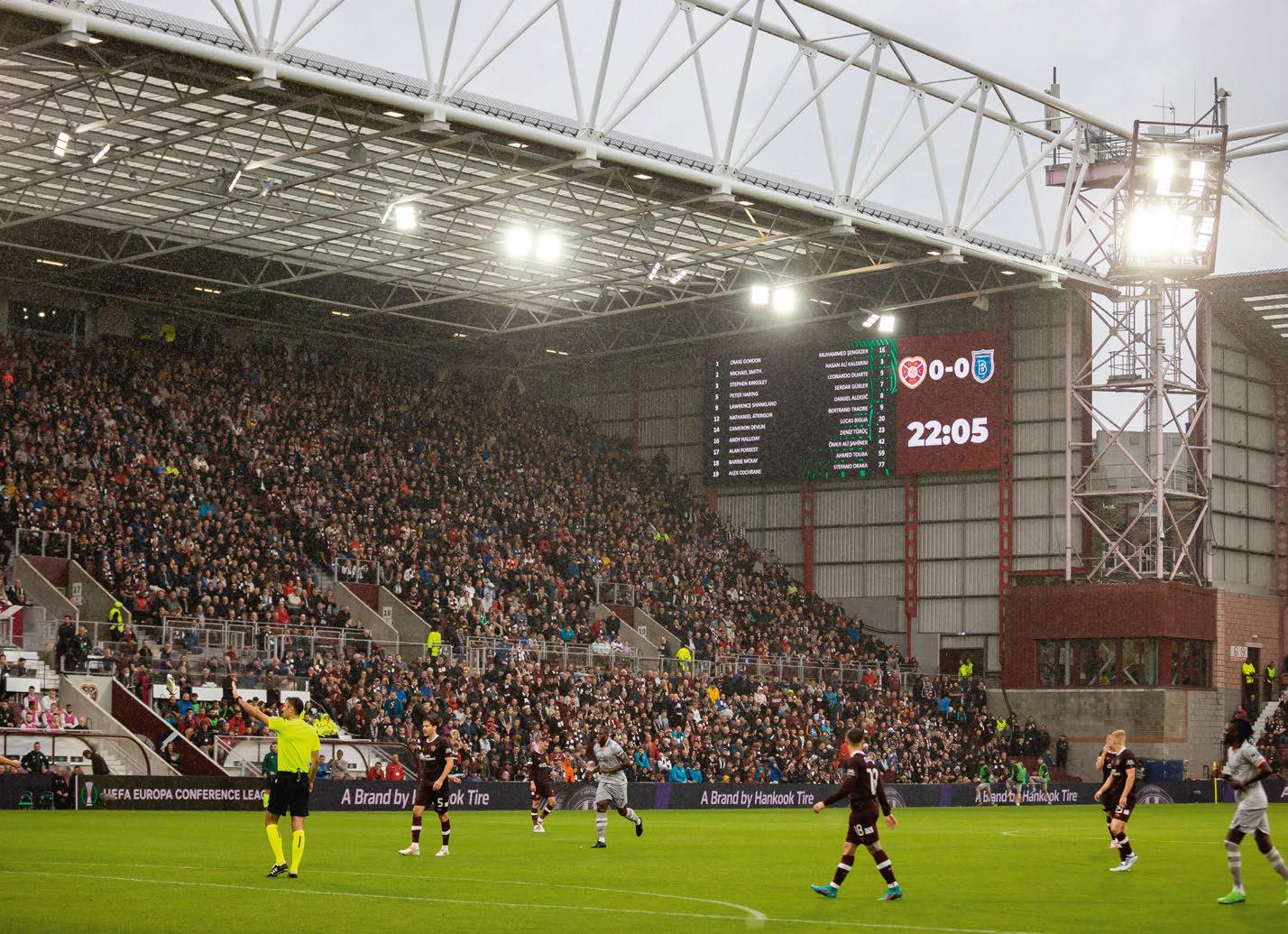
commercial partners but modernised the feel of Bloomfield Road.

For Scottish Premier League rivals Heart of Midlothian and Hibernian FC, ADI has worked closely with the clubs to understand their needs. Hearts opted for two eye-catching, superwide LED screens in the Main Stand and Wheatfield Stand, while Hibernian completed their digital stadium transformation last month with a 10mm UEFA-compliant perimeter system to compliment the large screens and digital scoreboards that ADI installed last year.
The integrated stadium-wide platform now gives Hibs the opportunity to co-ordinate content using ADI’s Total Stadium Takeover technology. Delivered over the Live Venue network, it allows them to push out synchronised content across all screens and digiBOARDs, creating a high-impact and high-

value canvas on which to deliver club or commercial partner messaging.
“It has been great working with ADI, who understood our needs from the very start and offered a stadium-wide solution that will undoubtedly enhance the matchday experience for all,” said Catriona McCallum, Marketing and Communications Director, Heart of Midlothian FC. “We will be working very closely with their specialist team to ensure content creation and delivery is of the highest quality. The two superwide LED screens have brought a new and improved feel to Tynecastle Park, and with the integration of ADI’s unique Live Venue solution, we are confident that we will be able to interact with our supporters and commercial partners in a more engaging way.”
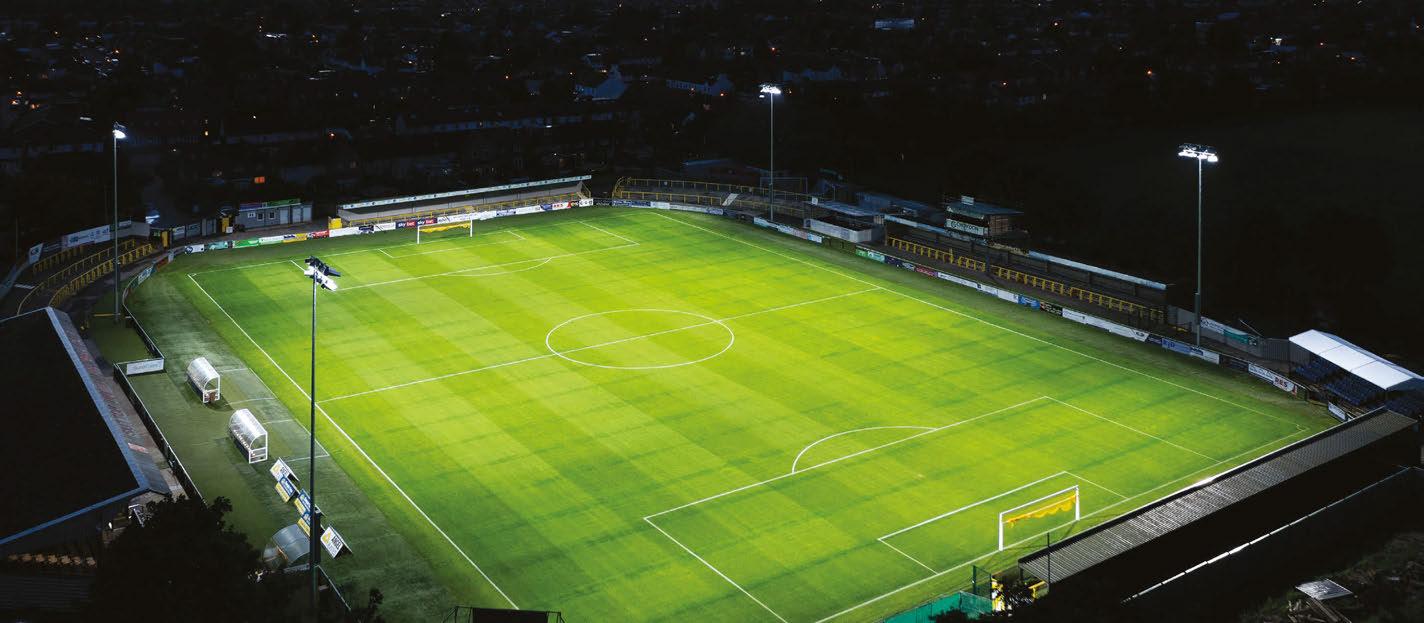


levating the fan experience in and outside the stadium with AJA ColorBox
There’s nothing quite like being in the stands at a live sporting event, and the fan experience is only getting better as more venues invest in high-end 4K/UltraHD HDR scoreboards and displays, as well as complementary interactive mobile apps. However, delivering all this high-end content to in-venue displays and audience mobile devices, as well as to OB trucks and broadcasters for distribution to audiences outside the stadium, requires in-venue audiovisual (AV) teams to work with a wide range of HDR and SDR sources, and outputs from various cameras. To this end, achieving a consistent, colour-accurate 4K/UltraHD HDR master format is essential.
AV teams in-venue need to be able to load, modify, save, and communicate looks with key production stakeholders easily as content moves across the stadium AV infrastructure; process video with ultra low-latency; deal with round tripping between HDR and SDR devices for items like replay needs and convert signals into a single master HDR format and multiple downstream deliverable formats. AJA’s new ColorBox device meets these demands and more, streamlining and accelerating
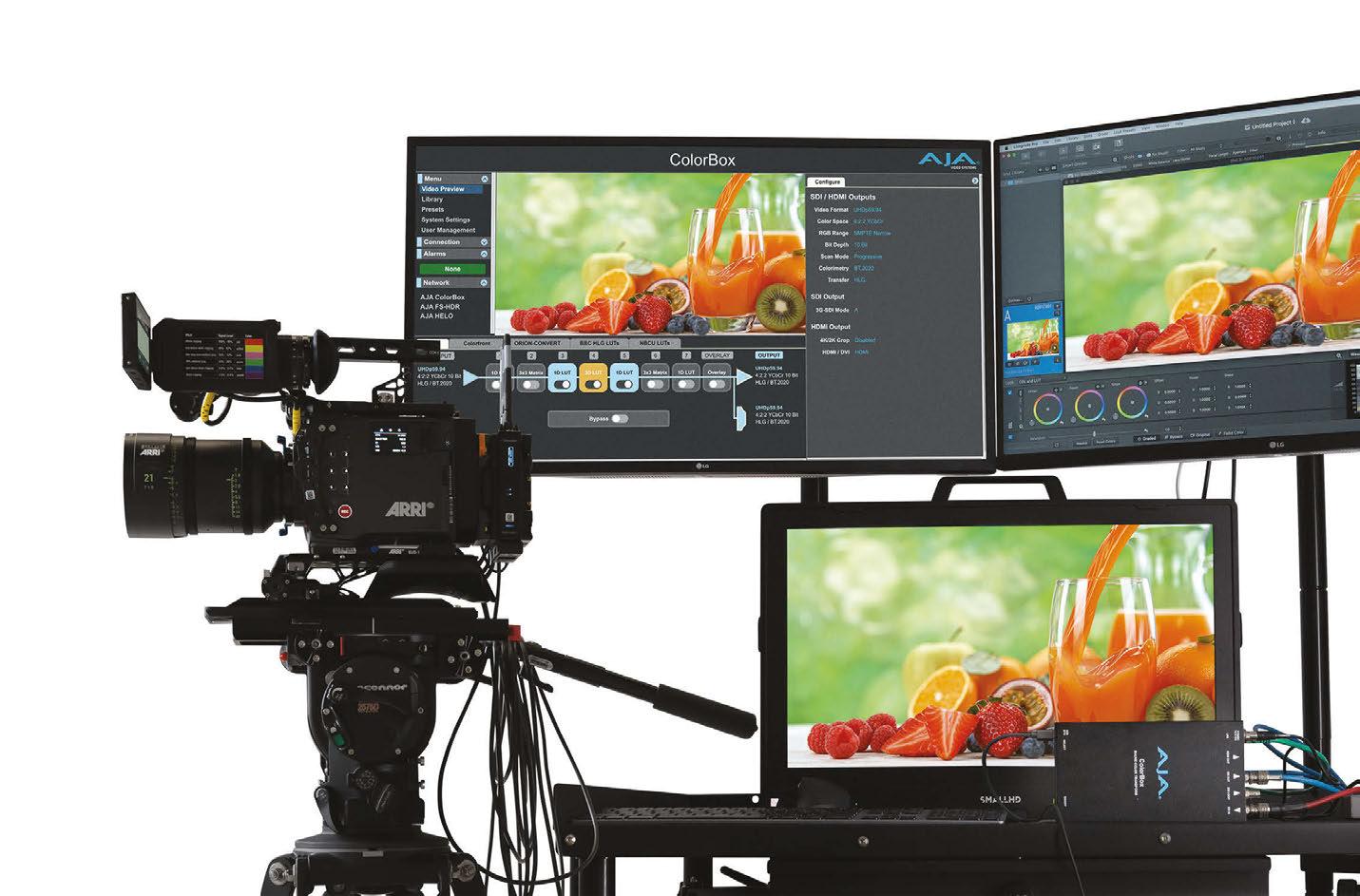
workflows with powerful in-line algorithmic or LUT colour transforms and low-latency video processing in a portable device.

A powerhouse of colour conversion Look management methodologies in a live stadium environment are unique from venue to venue or even game to game, so AJA designed ColorBox to support a mix of approaches to colour conversion. The high-performance device supports 12G-SDI in/out and HDMI 2.0 out for up to 4K/UltraHD 60p 10-bit YCbCr 4:2:2 and 30p 12-bit RGB 4:4:4 signal support for a wide range of live, on-set, and postproduction needs. Compact and weighing less than half a kilo, it doesn’t take up much desktop real-estate, and four ColorBoxes can easily be mounted in 1RU for fly away kits and equipment racks. An additional 12G-SDI loop-through output is available for passing through the clean signal to other devices.
ColorBox users can access one of five colour processing pipelines at a time, including AJA Color Pipeline (ACP), Colorfront, NBCU LUTs, ORION-CONVERT, and BBC HLG LUTs; the latter two modes require a license for watermark removal. ACP includes a 33-point 3D LUT processor with tetrahedral interpolation, four built-in user-configurable 1D LUTs, and two user-configurable 3x3 matrices. Additional tools like RGB Color Correctors and ProcAmps are also at your disposal to match cameras or correct a source. ColorBox makes set up and operation simple; an intuitive webbased user interface (UI) can be accessed directly from a wired ethernet connection or wirelessly via a built-in USB OTG port and a third-party USB WiFi adapter. The web browser-based UI includes a confidence monitor for previewing incoming signals and changes are reflected in real-time. Among many other valuable features, ColorBox also includes an RGB colour corrector and ProcAmp; extensive LUT, 3x3 matrix, and image libraries; powerful 4K still image capture and recall
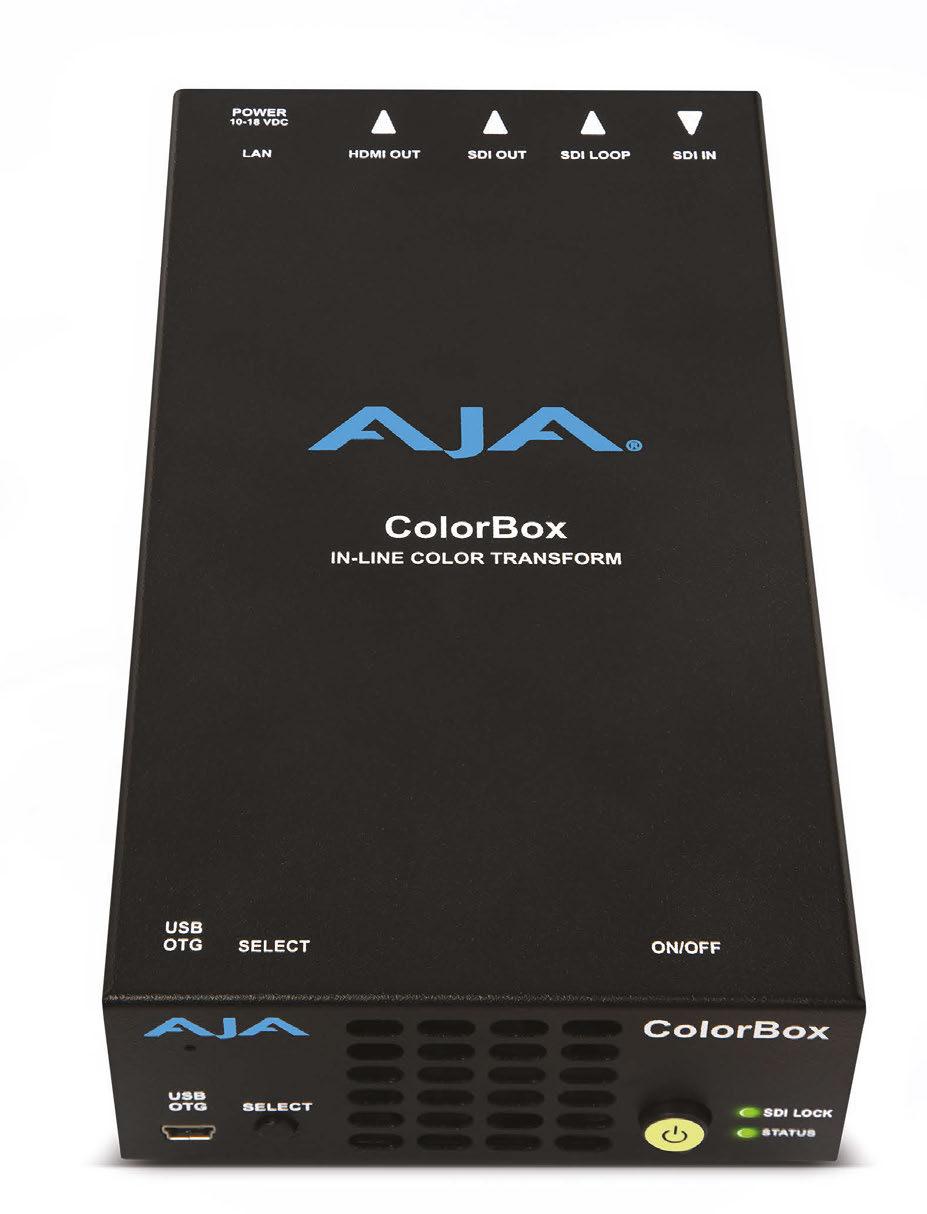
capabilities; and ancillary (ANC) metadata management. Flexible tools to meet nearly any live venue production scenario Additionally, AV teams are often working with many log signals originating from a range of broadcast and cinema cameras in SDR and HDR located inside the venue. Ensuring content that is pleasing to the eye, whether on the stadium videoboard or mobile application, or shared with remote audiences, requires one master HDR production format. Supporting this need, AJA ColorBox enables a wide range of conversion options to go from SDR to HDR and HDR to SDR, roundtripping, and even camera log formats to production formats.
Depending upon the venue and AV team, HDR approaches vary based on the deliverable (i.e., HLG or PQ). One AV team may prefer NBC Universal LUTs while another might use BBC HLG LUTs or something else entirely. AJA ColorBox supports a wide range of pipelines, including BBC HLG and NBCU, but also allows AV teams to create a custom look with AJA Color Pipeline, or leverage the colour science of Colorfront with a Colorfront pipeline. For teams interested in eliminating interpolation errors, AJA ColorBox’s optional license for ORION-CONVERT may be a good fit as it uses floating-point math to ensure greater color precision.

There is no second shot in live stadium event production, and most of today’s standard live production colour processing pipelines don’t come without multi-frame delays. AJA designed
ColorBox with this in mind, ensuring high-quality colour processing with ultra low-latency that is less than half of a video line.
Furthermore, AJA built ColorBox to support the hardware control solutions that AV teams use for every stadium production including integrations with SKAARHOJ and CyanView technologies. Dedicated support for these tools allows live production professionals to control one or many ColorBox channels at the same time. If multiple ColorBox units need to perform the same conversion on similar sources but they all require a modification, these integrations allow you to easily make changes with your preferred tool. Simply choose the parameter to modify in the RGB Color Corrector for example and adjust all of the sources simultaneously. AJA expects additional ColorBox integrations to follow, with its Software Development Kit (SDK) also available to developer partners.
Communicating image details at the start of the production –including the LUT and colour space conversion – downstream can be challenging. AJA ColorBox offers configuration overlays with user text fields to ensure configuration data is retained and shared accurately as signals move throughout the venue. In-stadium AV teams can enter custom information (i.e. camera and lens type, camera operator, location , etc.) and node status (i.e. on, off, enabled, disabled, transform selected or file loaded, etc.) and overlay it onto the video output. All



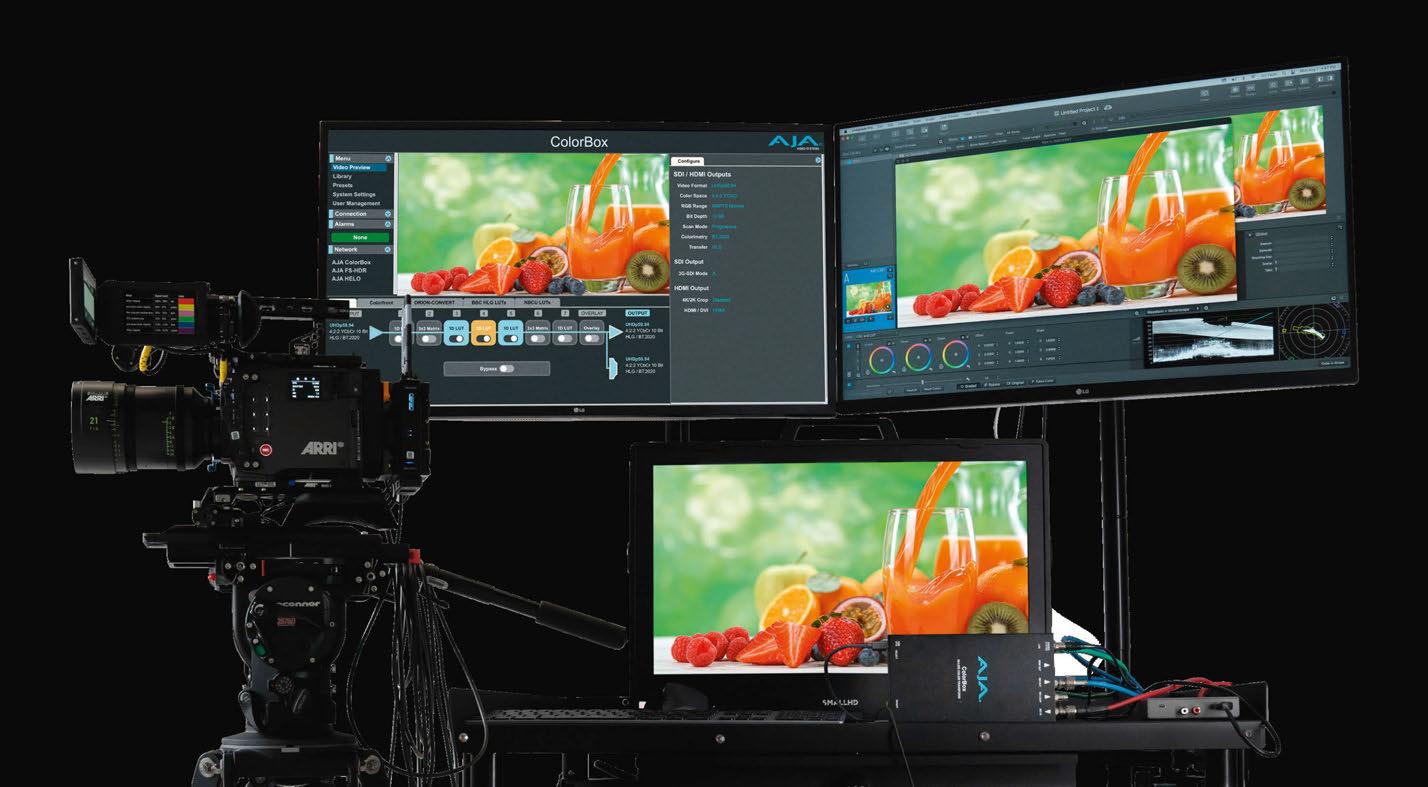
the status and details of the signal and the filenames or transforms used to create it can be also be captured on a highquality TIFF or JPEG image so that it can be communicated to other stadium crew with the proper context.
Presets also make it easy for multiple parties across the stadium production to share and access established looks. All files loaded into AJA Color Pipeline nodes can easily be exported as a single preset file with all the others nested inside. When a team member shares the original image and preset created in-venue with another ColorBox user on the project, they can load the preset. ColorBox then automatically populates the library with all the files used to create the look and configure the colour pipeline as it was seen previously.
In other pipelines, all node states and settings are saved as part of a preset in a similar way. Presets are a great way to manage roundtripping settings in ORION-CONVERT for example. Simply create a SDR to HLG transform for example with the knee controls set where you like, create a preset, and then select the HLG to SDR conversion and ORION-CONVERT automatically creates the mathematically inverse conversion
that you can also save as a preset giving you a matched set of custom conversions that achieve your look.
Capturing footage in-stadium is vital, whether to create VOD assets, highlights reels, and promotional content, or to share with teams for post-match analysis. Tweaking or auditioning alternate looks in real-time is straightforward when using ColorBox with a laptop, monitor, and a professional video recorder like AJA Ki Pro Ultra 12G. Since LUT files can be uploaded to ColorBox and played out directly, post-production teams can also easily preview and try out different looks without waiting for various renders, which ultimately saves stadium AV teams time.
ColorBox is an incredibly valuable tool for stadium AV pipelines, especially as high-quality 4K/Ultra HD HDR experiences become the fan expectation. It packs an expansive toolset into a small device that’s easy to use, and provides every tool imaginable to handle nearly any conversion needed in the field with unprecedented flexibility.
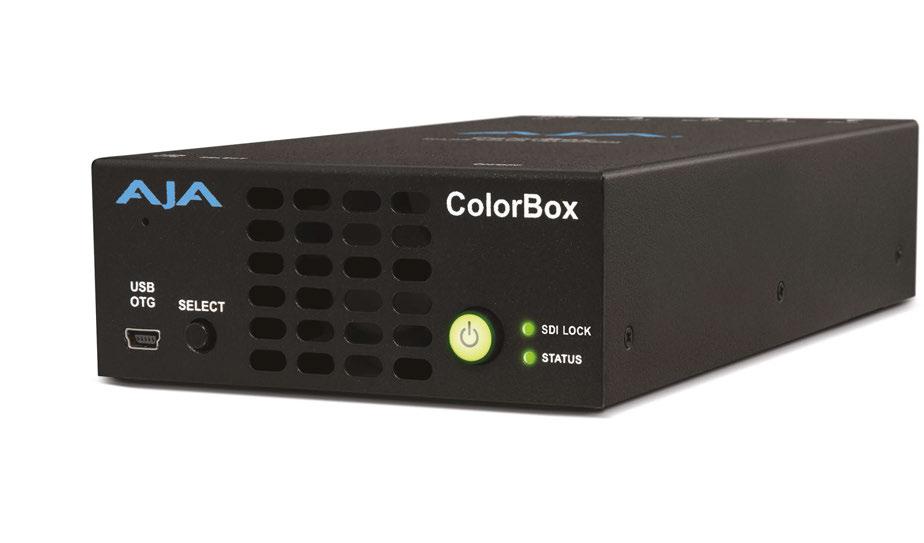

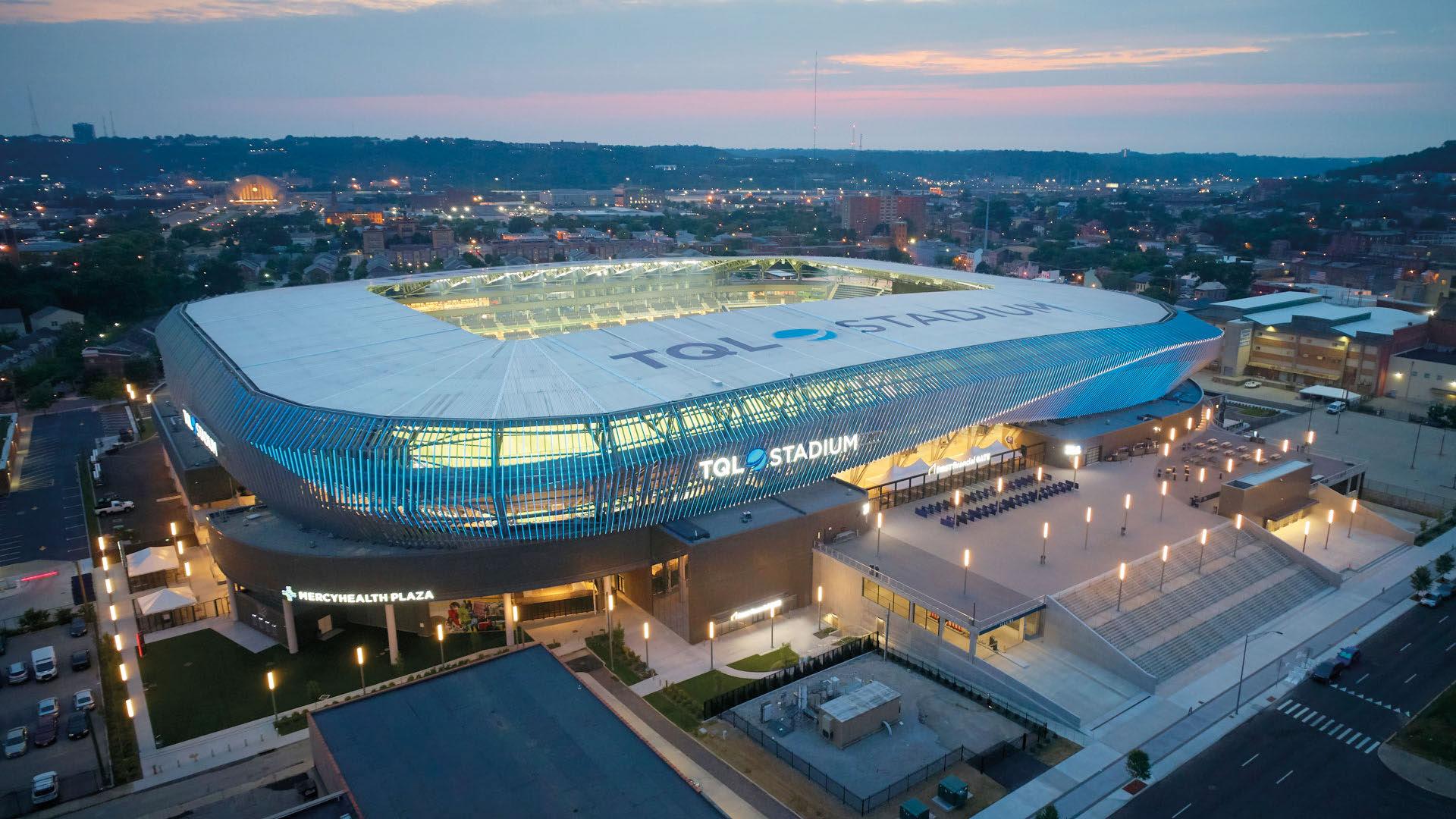








The 2022 World Athletics Championships took place from July 15-24 at Hayward Field, Oregon, with the eighteenth edition of the event having been postponed for as year due to the Covid-19 pandemic. Televised in 200 countries, with some of the best athletes from across the world competing, the venue had to be ready for what promised to be a monumental few days of sport.

To ensure Hayward Field was equipped to host the World Athletics Championships, The Parker Company – having worked on numerous stadiums and sporting events in the USA and Europe – was enlisted to offer its expertise.
The husband-and-wife CEO and COO team of the 2022 World Athletics Championships, Sarah Massey (CEO) and James Tolputt (CEO) reached out to Parker’s Sports & Events division Managing Director, Don Lockerbie, in May 2021 to serve as the Overlay & Procurement Lead for the Championships. The three had first worked well together on the ICC Cricket World Cup West Indies 2007, where Lockerbie was COO, as well as on several Olympic Games – for which Massey and Tolputt were previously long-time executives at the IOC.
“We were honoured to get the call and ready to take our big stadium procurement and project management model to the world of mega events,” explained Lockerbie. “The old saying that ‘you don’t build a church for Easter Sunday’ could not be truer in the big events world and the sparkling new cathedral for Athletics that is Hayward Field on the campus of the University of Oregon in Eugene is front and centre - the poster child for that old quote.”
The new Hayward Field is a $250m fit-for-purpose, track and field monument to the history of the sport at Oregon. Boldly visioned and sponsored by Nike founder, Phil Knight, there is no athletics stadium in the world it - and World Athletics were keen to see it built and bring their world championships to the USA for the first time.
That said, this cathedral to the sport was in no way ready to host the world championships without a tremendous amount of event overlay – temporary upgrades were needed to meet the full requirements.
Lockerbie added: “We took on the role to lead the planning and execution process to take Hayward Field from a university facility to a world championships venue – needing a great deal of space and buildings on the campus of the University of Oregon to make it all work.

“Of prime importance was to make sure the athletes themselves had the proper training, warm-up, medical treatment, and final preparation areas before they took the stadium bowl for competitions. To cover that, two football fields adjacent to the stadium were filled to the brim with marquee tents and equipment. The host broadcasters and international broadcast centre used another football field to build 20,000 sq ft of modular structures to produce the television and digital feeds across the world – adding an additional 30,000 sq ft of space to host the international rights holders who carried on their own added productions.”
The broadcasters required 54 commentator boxes at the finish line in the venue and over three-dozen camera positions –whilst the media required an additional 450 press table top positions just past the finish line to cover the competitions. The media were also housed in an indoor tennis venue transitioned into the MPC. A good $10-15m of overlay and equipment procurement was required to set the stadium to World Athletics standards.
Additionally, a massive new videoboard was added to the stadium, 3,500 temporary grandstand seats, a hospitality village for patrons and sponsors, temporary power to generate all the overlay build and operations – all planned for over two years and executed in 60 days of construction in time for the championships to shine.
Parker was charged by the LOC leadership to develop a worldwide tender to bid and award the overlay works to highly experienced experts and supplier/contractors in the industry. GL Events (France) and Eventstar Structures (USA) collaborated on and won the worldwide tender to become the Overlay General Contractor for the Oregon22 LOC.
Kyle Parker, Director, Sports & Events at The Parker Company, takes up the story: “Our focus was to first develop a strategic plan on best practices in planning and executing a robust overlay programme where a significant amount of modular construction was required, along with thousands of pieces of equipment and FF&E. Miles of cabling, over 100,000 sq ft of tents and buildings all had to come together on a college campus fully operational and integrated with its student body and university operations. The University of Oregon was a tremendous partner and became an advantage for the world championship organising committee.
“From May 2021 to May 2022, the planning, design, scheduling, budgeting, and supplier/contractor award operations took place. Then, from 1 May to 15 July 2022, the construction and FF&E delivery was executed in time for all permitting and safety approvals and the Games went on without a hitch.
“From there, 1 August to 15 September 2022 saw the overlay programme ‘disappear’, so that Hayward Field and surrounding football fields and University of Oregon buildings used were returned to their rightful university programmes and without damages as well.”
As mentioned, seating was an area that needed to be addressed by The Parker Company. Hayward Field’s construction team selected the up-and-coming Colombia and Miami-based Series Seating. Each of the 12,650 seats in the stadium are considered premium or even VIP quality, with the feedback from the visitors being very positive.

However, the venue’s capacity is 12,650 – much lower than the World Athletics requirements for seating, which proved a challenge for the Parker Overlay team. Over 1,700 seats in the premium finish line area were required to be removed to build in the broadcast commentator positions, media tribune desks, athletes mixed zone, finish line broadcast camera platforms and finish line timing and results operations. Series Seating provided both the removal/storage and post championships re-install of the 1,700 seats and in record time. To cover for the 1,700-seat loss, the overlay team contracted InProduction to provide 3,500 temporary grandstand seats to bring the Championships venue total for saleable seats to 14,450
World Athletics Productions (WAP) is a master class organisation, developed with the World Athletics governing body to manage the worldwide broadcast for all championship events around the world. Led by long time sports television executives, producers, directors, and technical managers – the assignment for Parker was to work closely with WAP to make sure all the technical requirements and standards were met, if not exceeded for flawless broadcasting of the championships by 54 international rights holders to over 200 countries. Led by senior broadcast professionals, James Lord, Alastair Waddington, and Catherine Simpson, whom have international experience on Olympic Games, FIFA World Cups, and other



sports such as cricket, rugby, golf and more – WAP came to the table ready to make the stadium ready for international broadcasting.
Lockerbie added: “In many respects and following the alwayschanging requirements and protocols caused by the Covid-19 pandemic – the event truly became a made-for-television experience and the new technologies added were also extraordinary and perfectly introduced and implemented.
“Broadcasting the World Athletics Championships is truly a herculean production effort, requiring nearly 1000 people on site, 19 Aggreko generators and over 20 miles of NEP cabling just to direct and produce the event with all the required technical equipment. WAP’s Mark Fulton, a former international 400m hurdler for Great Britain, directed the coverage and sent them around the world, leading to recordsetting television audiences in the USA and across the world. “From the LOC side, long-time Olympic broadcaster, Jim Carr of Carr-Hughes Productions led the planning and guided Parker with all the Overlay programme requirements, schedules and navigated the challenges throughout.”
The LOC also worked closely with the World Athletics partner for sponsorship and hospitality, Dentsu Sports. The Overlay programme, managed by Parker, required build out and outfitting food and beverage operations for over 10,000 accredited personnel and staff, for which a robust catering programme was developed in an on-campus basketball arena. Areas for World Athletics family and partners, as well as VIP patrons were planned and executed by the LOC, with international hospitality provider, Swiss-based Daimani.
World Athletics selecting the USA and Eugene, Oregon was a tip of the hat to the history of the sport’s success in this college town of 170,000 residents. However, the city – well known as Track Town USA – really stepped up to the occasion and produced a memorable experience for all those involved.

All the production challenges aside, the athletes came first,
and the record performances prove the overall atmosphere and conditions built for them motivated the excellence that the spectators witnessed.
LOC Executive Director, Niels de Vos, along with Sarah and James, led a local team, with national and international experts added in, to create the perfect combination of passion and focus for the event.
Longtime British event planner for World Athletics, Kenny Underwood, made sure all event stakeholders and functional areas were programmed to ensure excellence was provided for and executed. The Overlay program required this input to fully understand what needed to be built, where and when.
In the end, however, while it took everything Lockerbie’s 40-plus years in international sport had taught him and the implementation of Parker’s bespoke procurement model – the overall Overlay programme was a major success thanks in large part to the GL/E team led by Issa Moret (GL events) and Cedric Fournier (Eventstar), as well as Overlay Managers at Parker, Jordan Feldman and Kyle Parker, and Kevin Marschke of ME Engineers – who all contributed mightily to the Overlay programme.
Parker added: “The LOC should be well congratulated for producing a spectacular World Athletics Championships and for their leadership in introducing major sustainability programmes to the sport. Under the LOC leadership – fresh drinking water was provided to spectators via a non-plastic bottle programme, recycling was a priority, and all generators were operated on bio-diesel fuel.”
For Parker, the opportunity was a dream come true for Lockerbie, a former professional middle-distance champion athlete and university coach.
“It can be said, with pride, that the Overlay programme for the World Athletics Championships was executed seamlessly and coordinated with such great partners – a total success in the end,” concluded Lockerbie.
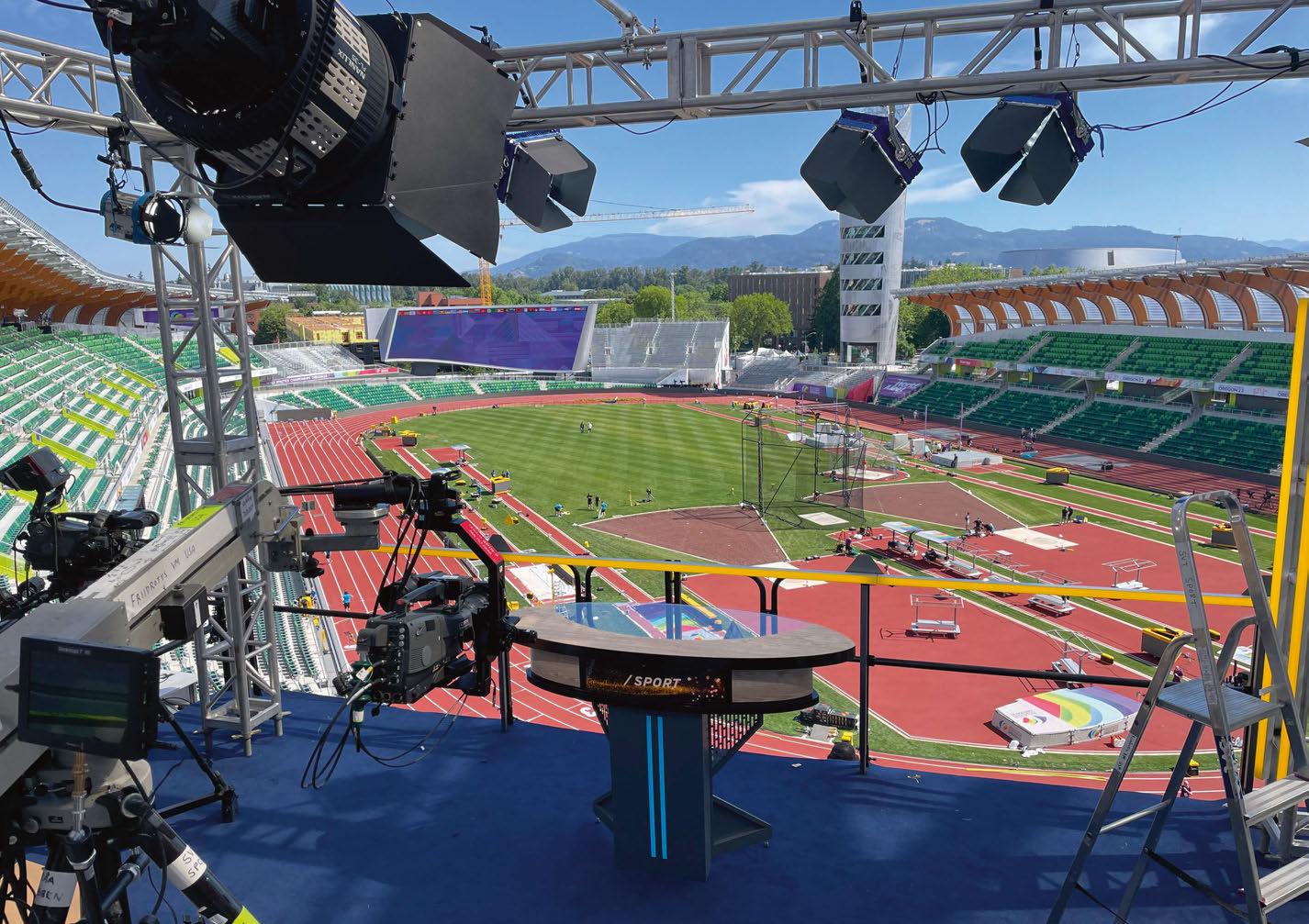




Images:
rom 21 to 26 June 2022, 20 teams competed in the Crelan FIBA 3×3 World Cup in front of a capacity crowd in the famous Groenplaats square in Antwerp, Belgium. Serbia won its fifth world championship title in the men’s final, while France prevailed against Canada in the women’s finals. To make it camerafriendly, the urban sporting event was illuminated by Cameo F4 D Fresnel spotlights and Cameo ZENIT outdoor LED wash lights.
The S2 Group and its companies S2 Pro and S2 Rent were responsible for lighting. The challenge was to illuminate the 19 x 15 metre court with approx. 1,000–1,500 lx at a colour temperature of 5,600 K and a CRI value >90 in a consistent, camera-friendly and shadow-free manner.

The event specialists from the S2 Group were supported by Darius Ansari (Adam Hall Field Application Engineer Light Technology), whose precise lighting calculations were a deciding factor in finding the perfect spotlights for the task at hand:
“In an initial calculation, it quickly became apparent that this was the perfect job for the Cameo F4 D, which performs impressively thanks to its high luminosity, a CRI value of over 90 and the desired cool white colour temperature. The following photometric simulations were then created using these parameters,” explained Darius Ansari, Adam Hall Field Application Engineer Light Technology
The spotlights were rigged in a truss circle with a diameter of 33 metres along a Magic Sky canopy system at a height
of 7.5 metres, where they could be easily positioned without impeding the event-specific ball throwing safety.
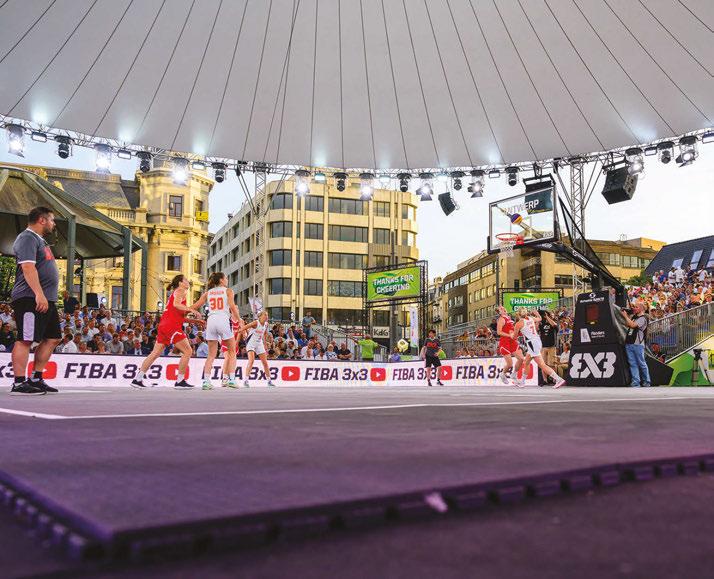
The decision was made to use 32 x Cameo F4 D Fresnel spotlights for the court lighting and 32 x Cameo ZENIT® W600 outdoor LED wash lights for the indirect dynamic lighting of the Magic Sky canopy in line with the corporate identity colours of the event and its sponsors. The court lighting met TV and photo standards of at least 1,500 lux vertically with an even distribution on the main court without any shadows or spots.

“The required minimum of 1,500 lux was easily achieved, and on average even exceeded at up to 2,500 lux,” added Joery Gysen, S2 Rent.
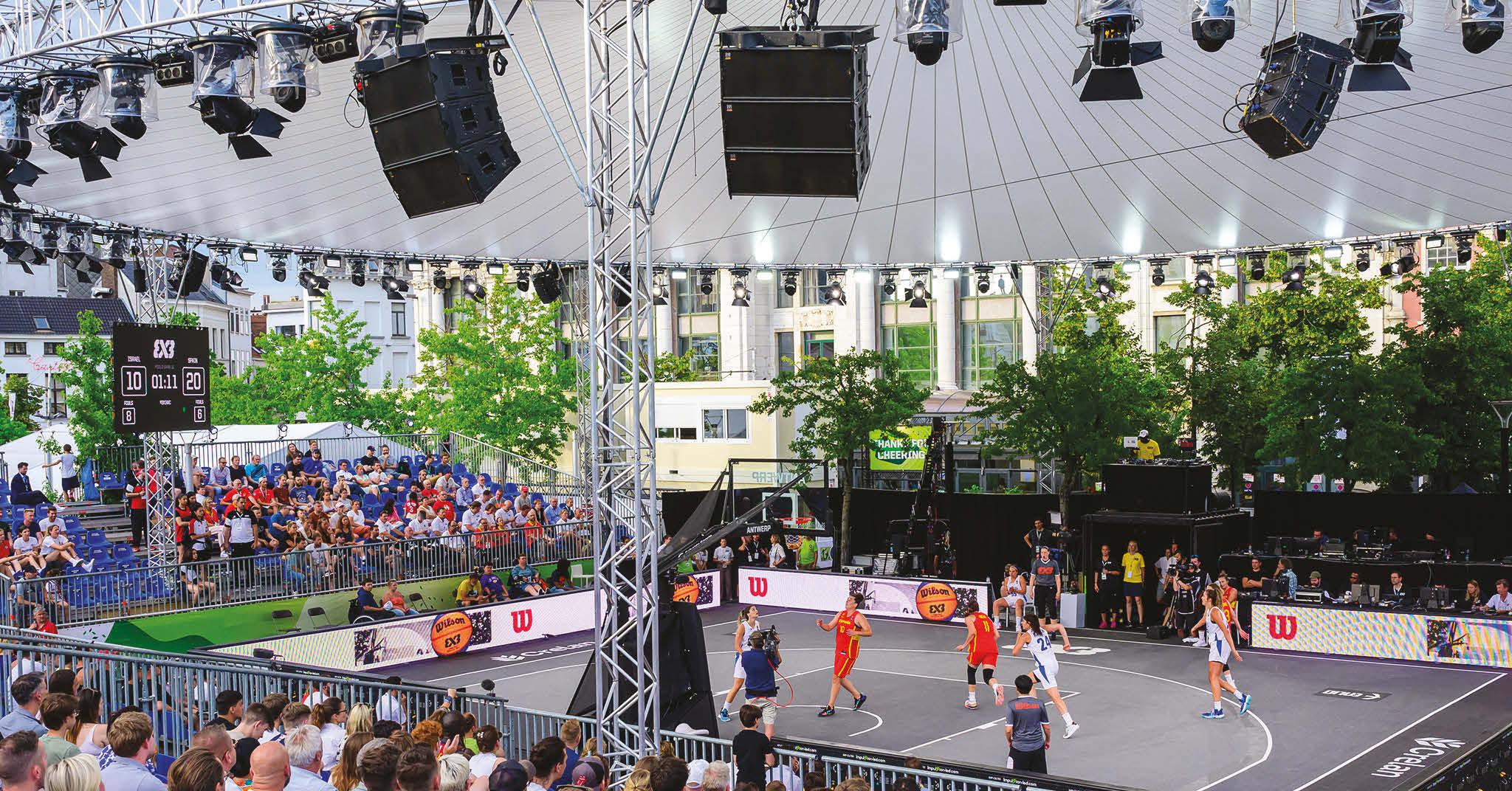






















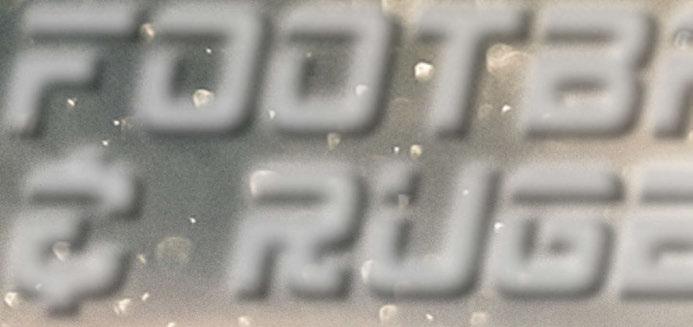


A closer look at some of the latest, state-of-the-art technology for sporting venues.
• IP mesh wireless video transmission system for live broadcast in stadia or any event location

• Super-low latency (down to 45 ms in HD and 75 ms in 4K)
• Mesh functionality: A radio is a transmitter, receiver and repeater at the same time – offering save and uninterrupted signal transmission in non-line-of-sight situations and congested environments
• 1 to 4 HD encoding channels (4 channels coming soon) on one frequency only
• Makes use of existing IP infrastructure to enhance networks and can be managed from any access point via user-friendly GUI without touching the system on the side of the pitch
VLA COMPACT SERIES JBL PRO www.jblpro.com/en/product_families/vla-compact-series-linearray
• The Variable Line Array (VLA) Compact Series is a family of three loudspeaker array modules designed to fill the needs of system designers for applications requiring a more compact line array solution with weather protection for stadia and arenas or any other project in need of compact line arrays

• Fiberglass box construction and weatherized components mean it ships with an IP 55 rating and is designed specifically for permanent installations where even coverage, intelligibility and high sound pressure levels are required
• Advanced technology component transducers utilizing Differential Drive® in the LF section and D2415 annular ring diaphragms in the HF section are optimized for low weight, high output and offer the incredible low distortion associated with JBL’s performance system
• An ultra-compact, high-powered subwoofer intended to be used in ground stack configurations and to fit in compact spaces
• Loaded with two lightweight, 13” ND13-S Neodymium drivers, utilising Adamson’s Advanced Cone Architecture
• Mounted in an ultra-efficient front-loaded enclosure, designed to reproduce clean, musical low frequency information

• Marine grade birch plywood, as well as aircraft grade steel and aluminium
• Equipped with two front and back Speakon™ NL4 connectors, or barrier strips, available upon request
• Ships with removable handles for easy handling, while allowing it to fit in tight spaces when the handles are removed, as well as rubber scuff guards on top and bottom that mate with additional IS213s for vertical stacking
• Comprehensive rigging points for creating a line array configuration and dedicated Line-Array Calculator software to design effective vertical coverage
• The range is comprised of the C2100, a dual 10” full range speaker with a 100° horizontal coverage pattern and the C265, a dual 10” full range speaker with a 65° horizontal coverage patter n. The C125S is a dual 15 inch cabinet that can be set as an LF extension or as a Sub Bass unit
ARCADIA™ CENTRAL STATION CLEAR-COM www.clearcom.com/arcadia-ip-intercom/
• All the Intercom you need - Scalable IP platform integrates wired and wireless partyline systems, including all FreeSpeak™ products
• Integrates with complete audio system via third-party Dante devices
• System is configured in a redesigned Core Configuration Manager (CCM™) enabling rapid setup, configuration and monitoring
• Scalable – port licenses are available in increments of 16, starting at 32 ports for the base system
• Future-proof platform, with more features being added, including HelixNet integration coming soon

• Compact three-way (two-way active) fully hor n-loaded design
• Active or self-powered options
• Arrayable: H 45° x V 50°
• Flat and smooth frequency response from 60hz to 20Khz +/-3dB
• SPL max: 140dB
• Tripleplay Low Latency HD Encoder where low latency is critical to optimise fan experience when viewing live streamed content
• An incredible glass-to-glass latency as low as 98ms, when used with the optimised Tripleplay PLAY3R-SP1
• Appliance is fully supported and integrated with Tripleplay IPTV, signage and video streaming
• Can support two channels (HDMI or SDI), converting them into an IPTV stream
• Coming soon! Tripleplay Low Latency 4K Encoder













The MTS series consists of four base models. These include two standard three-way configurations with 60° x 40° or 40° x 30° coverage, and two cardioid configurations that provide the same coverage patterns with enhanced low-frequency directional control. The 60° x 40° models can deliver extremely high SPL: 151 dB peak (music) down to 55 Hz at -10 dB and 154 dB peak (speech); the 40° x 30° models are capable of 152 dB peak (music) down to 50 Hz at -10 dB and 155 dB peak (speech).




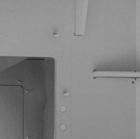


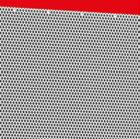











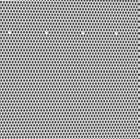



Each MTS standard model is equipped with four 15” woofers and dual coaxial mid/high frequency compression drivers. The four slot-loaded, high-efficiency low-frequency drivers are symmetrically coupled to the same full-range waveguide as the compression drivers to create a true pointsource with substantial bass response, eliminating the need for additional subwoofers in many applications. Stunning acoustic performance for indoor and outdoor installations of all sizes.
The MTS series offers another key differentiator from the current competition. Equipped with two additional woofers, cardioid models deliver full-bandwidth directivity control that reduces sound spill outside the pattern, enhancing dynamics, improving sound quality and clarifying speech intelligibility.


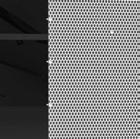

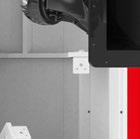



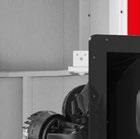
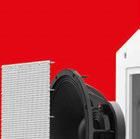
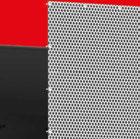









The largest staging company in North America - and a world leader in rigging sales and installations.
Give our readers an introduction to Mountain Productions...
Founded in 1979, Mountain Productions is the largest staging company in North America and a world leader in rigging sales and installations. The company has worked on more than 20,000 events with thousands of world-renowned clients. For over forty years, we have been providing high quality temporary and permanent entertainment structures for all kinds of events. Offering fully customisable stage design and construction, we have a variety of staging options and rigging accessories for both rent and sale, making the possibilities for unique staging solutions endless.
In addition to staging, we also have a broadbased Installations Department who can assist clients with all phases of their project through a variety of disciplines, such as design, engineering, fabrication, installation labour, and commissioning. With our team of world-class engineers, at MTN we have the capabilities and expertise to create custom installation solutions that are tailored specifically to each of our clients’ requirements.
Proudly based in Wilkes-Barre, Pennsylvania, our team has four decades of experience working with professional sports teams, large scale venues and promoters, universities, fashion houses, multinationals, and government bodies.
Our scope can range from something as basic as a bandstand for a local musician, to helping fit out a multi-billion-dollar stadium. We pride ourselves with being able to grow with our customers.
Your installation department is launching new services - can you tell us more?
This is an exciting time for the MTN Installations Department. Not only have we recently welcomed new leadership, but also additional staff to accommodate our growth and new services. We are in the process of expanding the department’s business offerings outside of our current installation capabilities, that traditionally revolve around turnkey offerings that are exclusive to our on-site projects and not to other integrators.
We want to maximise our internal capabilities and are moving further downstream by providing vendor services in design, engineering, and fabrication as stand-alone offerings. With this new investment, anyone can approach us as a trusted third-party vendor that provides design/engineering or fabrication to assist in entertainment and industrial installations.
One of the many things that sets MTN Installs apart from the competition is our in-house Design and Engineering Department. Our team can design build anything from temporary structures to permanent installation systems that are tailorfit to a diverse range of industries. These services include:
• Providing 2D or 3D rigging layouts to visualize how equipment will interact in your building
• Developing custom mounting and rigging solutions
• Performing 3D laser scanning to capture As Built conditions and creating a point cloud deliverable of the space for future use
• Performing calculations for wind, snow and seismic loads
• Providing stamped drawings from our team of PE’s in 43 states, with applications pending in the remaining seven
• Consulting services by specifying off-the-shelf rigging components that safely support your equipment or custom solutions
With our full team of in-house welders, carpenters, and finishers, we can take our clients’ ideas one step further with the fabrication of end-product solutions. Some of our fabrication capabilities include:
• Steel and aluminum welding and machining
• CNC, laser, or water jet cutting
• Powder coating and galvanising
• Assembly preparation and component test fitting
Which sporting venues has Mountain Productions worked on previously? We have carried out work for professional sports franchises, buildings and arenas from the NHL, NBA, NFL, and MLS. Some recent examples include Capital One Arena, Chase Center, Ford Field, and Red Bull Arena. We’ve also worked with collegiate venues such as: Neyland Stadium (Univ. Tennessee), Alumni Stadium (Boston College), Bryce Jordan Center (Penn State), and Moody Center (Univ. Texas). For these projects, we have installed a variety of rigging solutions for audio, video, lighting, and projection.
Do you have any upcoming sporting venue projects
We are in the process of finalising a number of sports venue installations that we are unable to discuss publicly at the moment. Check our website: www.mountainproductions.com for updates on all of our current projects.
What are Mountain Productions’ aims for the next five years?
Building the MTN brand is about expanding on our strengths, both geographically and in our offerings. You will continue to see that expansion in our home market and throughout EMEA and Latin America.
“The addition of a new office in Berlin is just the start. For us, it is about keeping our eyes open to identify complimentary goods and services as they emerge and develop from our learnings or from organic feedback from customers.” - Ricky Rose, CEO.
Pinpointing these opportunities, like providing bespoke installations-oriented engineering services to other integrators as a stand-alone firm, was one of those discoveries. Many small to medium size integrators don’t have internal engineering, design, and fabrication while larger companies’ sub-contract out some of these disciplines depending on the project. Over the next five years, we will continue to build our team to be the go-to vendor and service provider for these organisations to help them fill in the gaps and provide support.



Can you introduce yourself and tell us about your career background?
My name is Andrew Hawk, and I joined Mountain Productions in 2015 as a Design Engineer after graduating from Penn State Behrend with a degree in Mechanical Engineering. I initially began by working with our Staging team, with a focus on product development. In 2016, I began working more heavily with the Installations Department and increased my focus and involvement across every facet of its development from budgeting and site surveys in the proposal phase, to working with our teams in the field to guide what is necessary from the standpoint of a professional engineer.

Growing up, I spent a large amount of time working in and around live events as my father owns a company which focuses on audio and video installs and rentals. We primarily worked on schools, churches, and concerts using a variety of AV equipment. This experience was extremely beneficial to my professional development within the MTN Installations Department.
Working in the Installations Department has afforded me the opportunity to design and develop rigging solutions for over 30 venues of all sizes, from small theatres to the MSG Sphere in Las Vegas. In managing these projects, I have learned that no two venues are the same, and each project comes with its own set of challenges, which keeps our team constantly engaged. As I transition to the role of Director of Installations, I look forward to developing new business methods and strategies to help our team continually exceed our clients’ expectations.
Next big thing in sporting venue design/ installations?
A positive trend that we’ve noticed is that venues are putting more and more thought into their rigging needs. Whether it’s through increasing structure capacities or strategically positioning rigging points, venues are finding ways to increase their flexibility and speed of rigging. Small changes like these may often be overlooked, but they ultimately lead to a better
fan experience. The MTN Installations Department is working on both retrofits for older installations and new builds, keeping our clients on the cutting edge of technology and design.
My favourite sporting venue has to be Beaver Stadium (State College, PA). Being in the stadium with 106,000 other fans is always an exciting time!
www.mountainproductions.com

